Biography
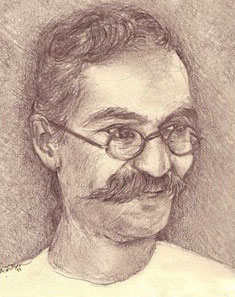
A teacher's work is like flowing water. The fulfilment of the work of education is not in teaching one or two subjects... Real education lies in making humans aware about their own unending strengths.
Early days
Vallabhipur
Gijubhai was born as Girjashankar Bhagwanjibhai Badheka on 15 November 1885 in Vallabhipur or Vala—once an important port and town of Gujarat, established by the king Siddharaj. His father Baghwanjibhai Badekha was a pleader in Vallabhipur. Soft spoken and good natured Bhagwanji was a respected member of the community. His mother was Kashibai was a simple, devout, quiet and honest lady. Although not formally educated, she taught herself to read and would spend her free time reading religious books.
Young Girjo, as he was called, was admitted to the primary school in Vala at the age of six years. As he recalled later he had already been taught the basics of reading and writing by a young girl Bhooba who used to come to play with him, and he considered her as his “adi guru” or first teacher. Years later, in many of his writings he reminisced about those early school days; they reflected the educational system of that time which included corporal punishment, fear, and rote learning. So deeply etched was this memory that, later, he strongly urged his teacher trainees to "bring down the schools that are like the stables of horses. Dig deep and tunnel out the climate of beatings and fear in these children's slaughterhouses".
The boyhood memories also include the capers that he and his gang of close friends—Hariyo (HC Trivedi), BT (Bhaishankar Tribhuvan Bhatt) and Girdhar enjoyed, including breaking a few rules and defying convention. One example is the episode of Mamani Jalya. One the outskirts of Vala there was grove of Pilu trees locally called Mamani Jalya. Folklore had it that the grove was haunted by the ghost of Mama and hence no one dared to enter the thicket. The gang of friends, under the leadership of Gijubhai, wanted to prove the fallacy of this superstition, and penetrated deep into the grove, eating the fruits, until after sunset. Many years later Gijubhai described this adventure in a booklet titled Mamani Jalya.
Bhavnagar
The primary school in Vala went up to class seven, so Girjo had to move to Bhavnagar to continue his education. He stayed with his maternal uncle (Mama) Hargovindbhai Pandya who was a Station Master in Bhavnagar with what was then the Kathiawad Railway. Motabhai as he was called, was widely respected across Bhavnagar state for his upright character and pious temperament. He was a follower of Nathuram Sharma a respected religious scholar and the founder of the Anand Ashram in Bilkha, Saurashtra.
While he spent the school term in Bhavnagar, Girjo continued to go back to Vallabhipur during the vacations, where he caught up with his old friends and spent his days swimming in the Ghelo river, exploring ancient monuments, visiting the Vaijnath Mahadev temple, and staying out till late. The river, trees, fields and other places that the young Girjo and his friends explored; his neighbourhood of Bhatopa Sheri, and its residents, the people with different professions and their interactions with his family, the youthful adventures--all these must have been deeply engraved in young Giju’s mind. Many years later they come alive with vivid descriptions in so much of his writing for children and young people.
Balsahitya Guchh, Avalokan Granthmala
The young boy was greatly influenced by the simple life style, deep scholarship and work ethic of his uncle Motabhai. Living with his uncle, the young boy learned important life lessons from him—the approach to life, his honesty and industry, and strength of character. These made a deep impression on him, and this sanskar was reflected throughout his own life and in his work.Hargovindbhai's house was located in a crowded part of Bhavnagar. Giju became close to his uncle's son Popatbhai. Soon his circle of friends began to expand. The friends all used to meet at a neighbour Chunibhai’s house to study together, and spend time in other pursuits. In these early days in Bhavnagar some of Gijubhai’s friends were Ramnarain V. Pathak, Labhbhai Bhatt, Lakhubhai, and his cousin Popatbhai.
The young Gijubhai was already a voracious reader. He read whatever he could lay his hands on—books about Benjamin Franklin, Garibaldi, Marie Corelli; adventure stories, as well as Gujarati authors Manilal Nabhubhai, Govardhanram and Kalapi. He was very fond of poetry.
During the period that Gijubhai was there, his uncle was appointed the stationmaster of Bhavnagar terminus, and allotted a bungalow close to the station. Then Gijubhai’s group of friends moved their sessions to the Station Bungalow as it was called.
Growing up
Gijubhai completed his matriculation from Bhavnagar and entered college.
In the meanwhile his mother passed away. Though himself in his teens, Gijubhai felt a sense of responsibility for his three younger brothers and widowed father. He would return to Vala for all the holidays and vacations.
Gijubhai had been married at a very young age to Hariben. Hariben herself, just a girl then, had stayed in her maternal home. Now she moved to her marital home and took over the care of her father-in-law and Gijubhai’s young brothers. Gijubhai was entranced by her simple, warm and loving nature. Sadly after just a couple of years of being together, Hariben passed away. Her passing left a deep void in his heart.
Gijubhai continued with his education but it was difficult to meet the expenses of the fees. In an age when young people were expected to be strongly bound by, and adhere to, conventions, large family expectations, and social mores, Gijubhai was confronted with dilemmas and decisions about how to respect the ties and responsibilities, while also finding his own space and path.
His uncle Motabhai had a friend called Bhaishankar Dhanji Dave. They were both followers of Nathuram Sharma and used to meet often at his ashram in Bilkha. On one visit Gijubhai accompanied his uncle to the ashram. Bhaishankarbhai was very taken with the young man and proposed that his daughter Jadiben be married to him. In an era when it was rare for girls to study, Jadiben was educated. With her delicate build, love for cleanliness, maturity and affectionate nature, she won over everyone.
Gijubhai and Jadiben were married in 1906. Jadiben took over the care of her new family.
Gijubhai completed his first year of college. But due to the family’s economic situation it seemed difficult for him to be able to complete the 3-year-course. He tried a few jobs in Bombay, but his life took a different turn. While considering what to do, he wrote to his childhood friend Harishankar Trivedi who was in East Africa at the time. His friend replied “Do come here. Come immediately!”
Africa
Gijubhai set sail for Africa in 1907 accompanied by his friend Labhshankar Bhatt.
A young man, newly married, leaving behind all that was known and familiar for distant unknown shores--it was a challenge, but also an adventure to explore and discover not only new lands but also one’s own self. It was truly a journey into the unknown in every way. Gijubhai described this in Africani Safar (African Journey). The experiences on board ship and the churning of thoughts were evocatively expressed in Gijubhai’s diary of his voyage to Africa. Rojnishi (Voyage to Africa Diary).
The slightly-built Gijubhai was strong in heart and mind. His openness to learn and his curiosity about places, people and things made his stay in East Africa rich in experience and understanding of different cultures and ways of living.
After trying a few different jobs, he worked with the Solicitor and advocate Mr. J. P. Stevenson in Nairobi. Here he learnt much. When he asked Stevenson what he should do with some papers, he was told “use your brain”. This was the response he got to many of his questions. And so Gijubhai did start to “use his brain”. Perhaps this planted the seeds of his approach to his work in education. He would always try to create situations for his students where they would indeed have to use their brain instead of repeating what they had memorized.
Gijubhai made friends easily, and his friendships lasted a lifetime. In East Africa also he found like-minded people. They started a literature club where the activities included reading, writing, giving talks and discussions—all in English. Gijubhai also got to know the local inhabitants and picked up a good amount of Swahili. His love for travel and geography had ample scope for development as the friends explored the diverse landscapes with outings, safaris and visits.
These experiences are vividly and humourously described in Africa Sambhariyun (Africa Remembered).
Gijubhai could have continued to live and work in Africa. But he had left behind an aging father, a young wife and younger brothers. He did not have substantial savings to show for his time there. There was also an inner urge that brought him back to India, and back to his mentor – Mama Hargovindbhai, with whom he had many discussions about what to do next, and future career possibilities.
His uncle had wide contacts, among them Sheth Gordhandas Bhimji, a businessman in Bombay. Gijubhai went to Bombay to work for him. The business dealings were complex, and not always straight; the work environment was chaotic and erratic. Gijubhai could not take this for more than a couple of months. He returned home at the end of 1909.
More discussions ensued on an appropriate choice of future career. The arguments weighed in favour of law. Several points tilted the scales including the fact that Gijubhai’s own father was a pleader, and that he himself had worked with a solicitor in East Africa. There is even a story that when Gijubhia was studying in Bhavnagar, a “head reader” from south India had visited. Gijubhai clean-shaved his hair and went to him. The man read the lines on his head and predicted that the boy would, some day, become a great lawyer! There was also a sense that this profession offered an opportunity help people fight for their rights, and to do something for the country; and it also paid well.
Once a decision was made, Gijubhai was always quick to act—a quality that he demonstrated throughout his life. So, law it would be. The next decision was, what kind of lawyer? Gijuhbhai had only completed the first year (Previous) of college. A BA degree was prerequisite for join for an LLB degree. He could not afford to spend those many years studying. So it was decided that he would become a District Pleader.
Gijubhai left for Bombay to study law. To support the household expenses he took up a job as a teacher in a school in Mumbai. His room No. 63 in Maganbag in Parel became a regular meeting place for friends, chief among them – Ramnarayan Pathak, Mahadevbhai Desai and Kalaguru Ravibhai Raval. Gijubhai studied the legal tomes late into the night. In the short breaks that he took, he indulged in his passion for reading and writing of literature.
Gijubhai the lawyer
Gijubhai completed his District Pleader course in one year. He also acquired the High Court Pleader’s qualifications. But a degree alone did not guarantee income. Gijubhai returned to Vallabhipur. But there was not much to practice in a small town. Deciding against trying to establish his practice in Bhavnagar, Gijubhai chose to move to Vadhwan Camp (Surendranagar) in 1911 to start practicing as a Pleader. This was the time when Amrutlal Sheth, Popatlal Chudgar, Mohanlal Barrister, Manibhai Kothari (all well known lawyers) were practicing there. Gijubhai practised in partnership with Popatlal Chudgar and Amrutlal Sheth. They also started a class for the systematic study and administration of law. Gijubhai believed that whatever profession a person chooses, they must have a strong theoretical foundation of the subject. Perhaps the roots of the Adhyapan Mandirs or Teacher Training Institutes can be traced all the way back to Gijubhai’s study and practice of law.
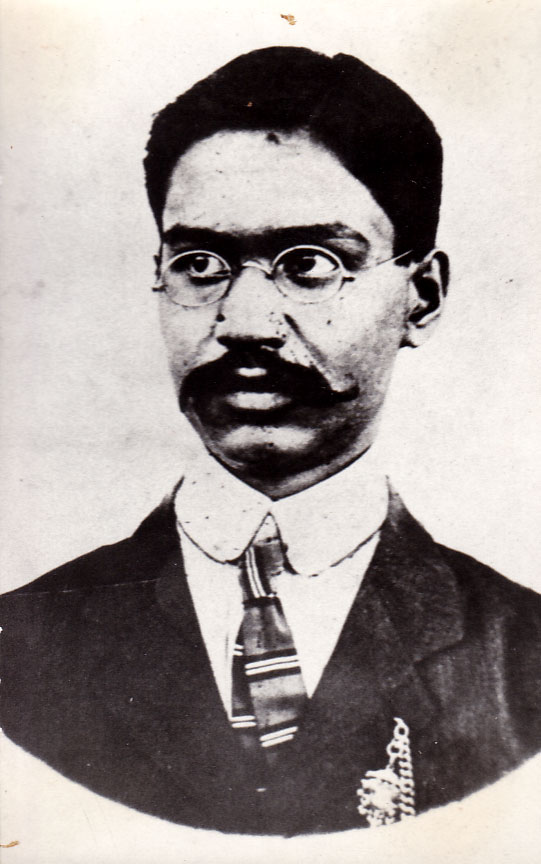
Gijubhai the lawyer
Explorations and discoveries
In 1913, on 27 February, a son was born to Gijubhai. The advent of Narendra (Bachubhai) triggered the spark that was to launch Gijubhai into a new role which became his life’s mission.
The young parents Gijubhai and Jadiben were familiar with the kind of educational environment that the local schools of the day offered. They were apprehensive about putting their son Bachu into such a system when the time came for him to start school. They started to read and explore possible alternatives. Then serendipity stepped in.
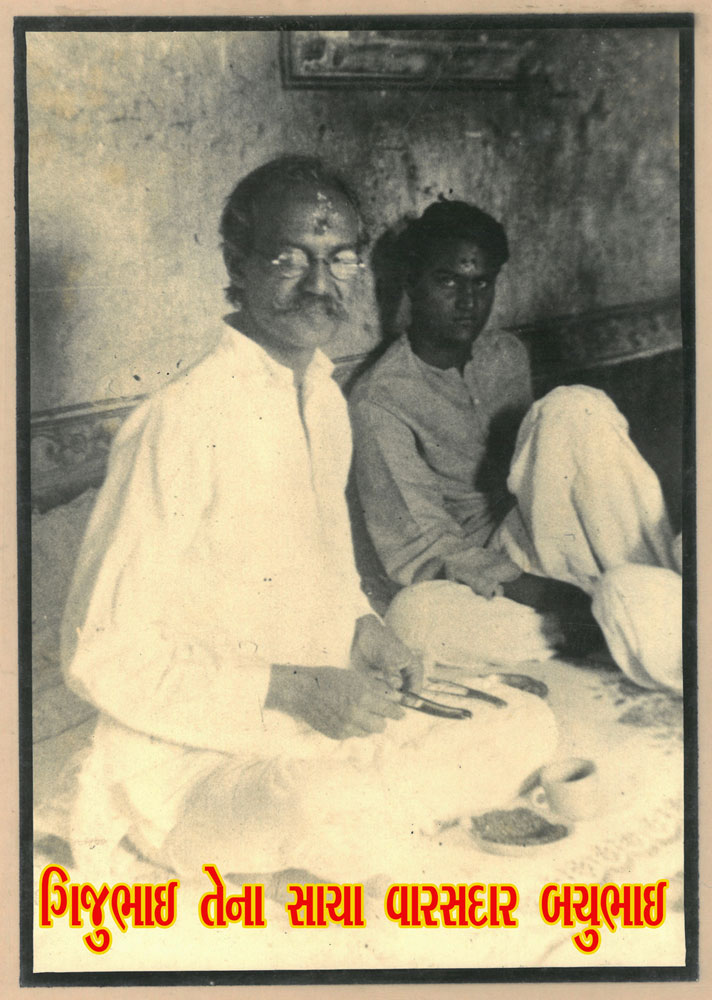
Gijubhai with his son Narendra (Bachubhai)
Darbarshri Gopaldas Desai, who visited Vadhwan Camp often, became friends with Gijubhai. He told him “If you want to read literature about children’s education, and see a new kind of school, go to Vaso and meet Motibhai Amin who will show you everything”. Gijubhai went to visit Motibhai and see his school. Motibhai gave Gijubhai a Gujarati book describing Montessori method of education. This is how Gijubhai got introduced to the thinking of Maria Montessori, and her writing.
As Gijubhai started reading more books about this new approach to children and education, the mental fog of uncertainty and discomfort began to clear. As he read, he also started to apply some of the new ideas as and where he could on his son. Pleased with the results, he began to discuss these with his friends.
Gijubhai’s practice was doing well, he was gaining a name and earning too, but his heart was not in the machinations of legal matters and his conscience would not permit him to adopt the malpractices that were common, nor accept the casual attitude that “all is fair in legal practice.” He strongly felt that to remain in such a profession would be a source of constant distress to him. He yearned for something different and meaningful.
The turning point
In the meanwhile, Hargovindbhai and his Gurubandhu Nrusinprasad Kalidas Bhatt (who became best known as Nanabhai Bhatt) had started, on 28 December 1910, a hostel for students from nearby towns and villages who came to Bhavnagar to study (just as Gijubhai himself had done). The hostel was opened with the blessings of their guru Nathuran Sharma, who also gave it the name the Dakshinamurti Vidyarthi Bhawan after his family’s presiding deity Shri Dakshinamurti Dev. Nanabhai was at the time teaching in Shamaldas College.
Initially started in the Takhatsinhji Dharamshala, close to Station Bungalow, the objective of the residential institution was not only to provide lodging and boarding for young students but also the cultivation of dharmic sanskar in the younger generation (both the founders were followers of Nathuram Sharma). Soon the number of students started to grow and the hostel shifted to a house called Sagar Kutir, at the foot of the Takhteshwar temple hill.
With increasing numbers, the management tasks also increased. Three years after its founding, Nanabhai felt that for the institution to grow and develop, it needed full time attention. So he gave up his teaching job at the college to devote all his time and energy to Dakshinamurti. Under his visionary leadership, the institution began to expand; land was acquired and new buildings came up. It was time to formalize the institutional structures and systems.
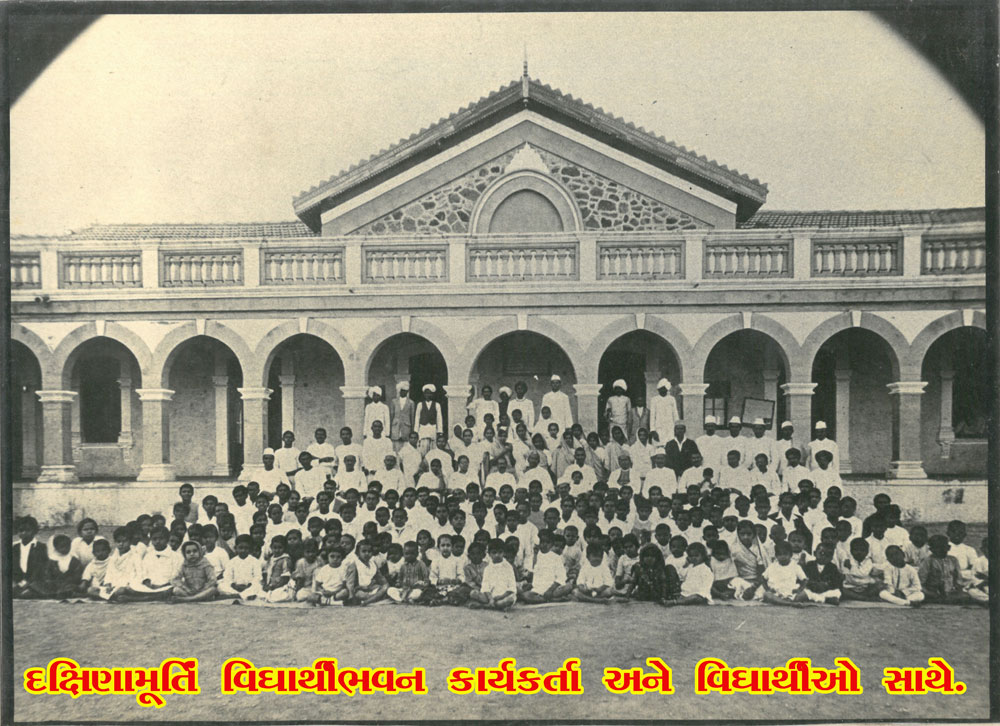
Workers and students of Dakshinamurti Vidhyarthi Bhavan
The first step was to draft the constitution. A lawyer was required for this. It was but natural that the first name that came to mind was Hargovind mama’s young nephew Gijubhai who was practising law in Vadhwan, Gijubhai was called upon to frame the constitution. The task was accomplished, and from that date on (13-9-1915) Gijubhai became the legal advisor for the institution; in this role he visited Bhavnagar often and became familiar with the institution.
In the meanwhile Nanabhai was becoming increasingly burdened with numerous administrative and other institutional responsibilities. Hargovind mama once again called upon his nephew, suggesting that he move to Bhavnagar and help Nanabhai with his institutional duties.
It was the clarion call that was to change Gijubhai’s life and the face of children’s education.
Already frustrated with the legal profession, and deeply engaged with the dilemmas of educational systems, he did not need a second bidding.
At the age of 32, Gijubhai quit his legal practice and joined Dakshinamurti on 13 November 1916, as Assistant Warden.
What did he bring to his new vocation?
The scientific perspective of an experimenter, the desire to do something new, the insight to draw out some light from the doldrums that the educational system was in, and faith. This was supported by the strong heritage of his uncle’s sanskar and the revelations from the writing of Madame Montessori.
A strong foundation upon which to carve a new path.
Starting anew
The family moved to Bhavnagar and rented a house in Navapara. Gijubhai was paid fifty rupees as salary and five rupees as house rent. The while day was spent in the hostel with the students, he read literature about education till late into the night. The old law books were left behind in Vala and books on different educational methods and experiments, as well as psychology, began to fill Gijubhai’s shelves.
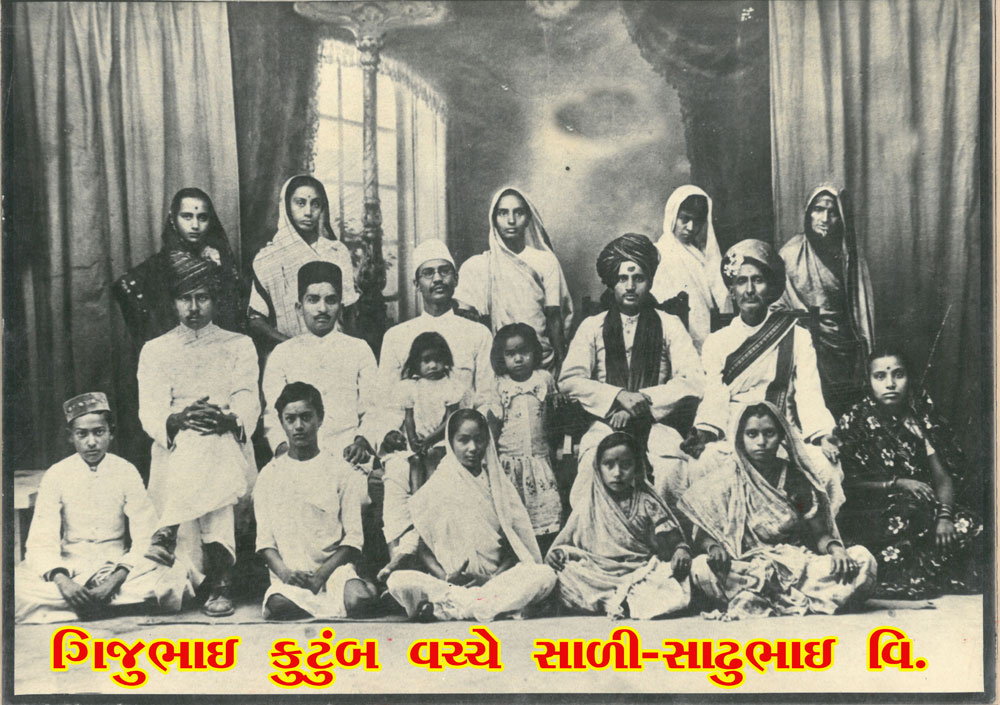
Gijubhai with his family - wife's sisters and their husbands
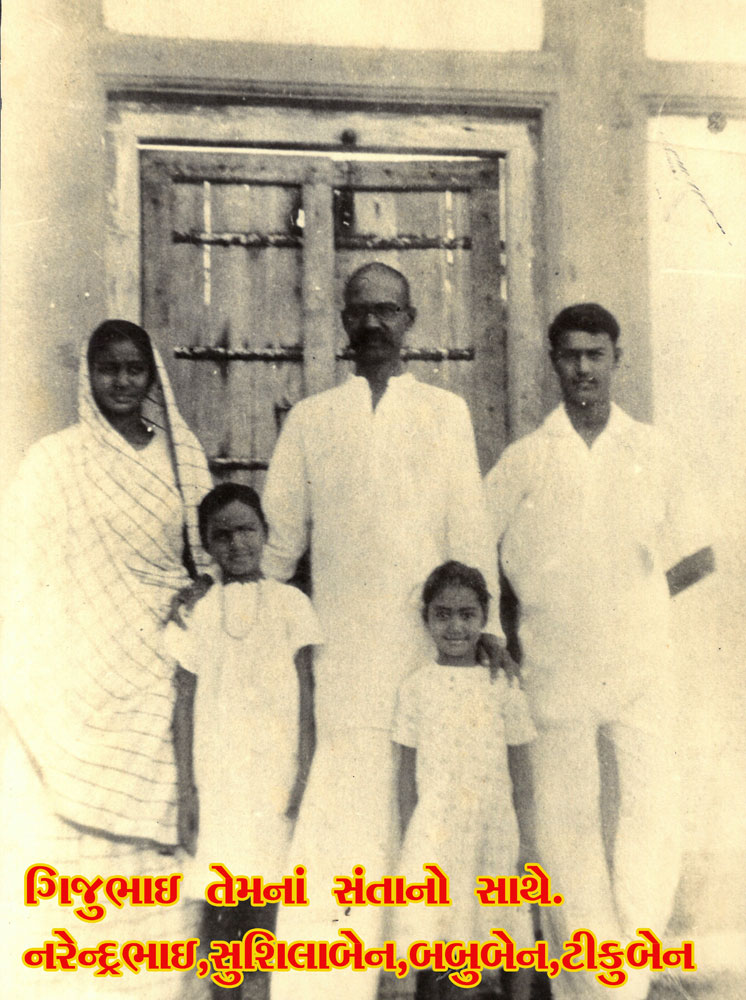
Gijubhai with his children (l-r) Sushila, Divya, Nalini, Narendra
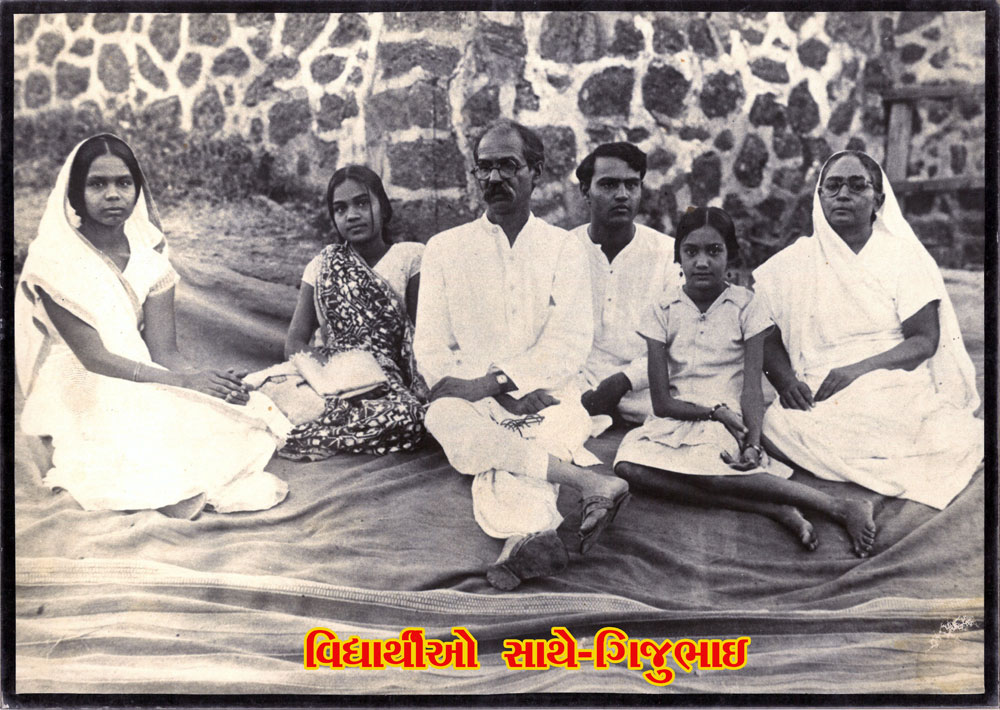
Gijubhai with daughters Divya and Nalini, son Narendra and two students
Nanabhai and Gijubhai realised that it was almost contra indicatory that while the hostel could provide a holistic environment for the students to live in, the schools that the students attended in the town continued to provide the traditional system of teaching and learning. Thus they decided to start the Dakshinamurti primary school, first with standards one to three, and then going up to class five.
Kumar Mandir as it was called opened on 1 June 1918. Gijubhai became the headmaster.
Dressed in a full length dhoti, long coat and white kathiawadi turban, the headmaster with his big moustache and glasses, got completely immersed in teaching, and trying out experiments that he had been reading about.
As the classes increased, Kumar Mandir was extended to include a high school called Vinay Mandir, Gijubjai’s teaching and administrative responsibilities increased.
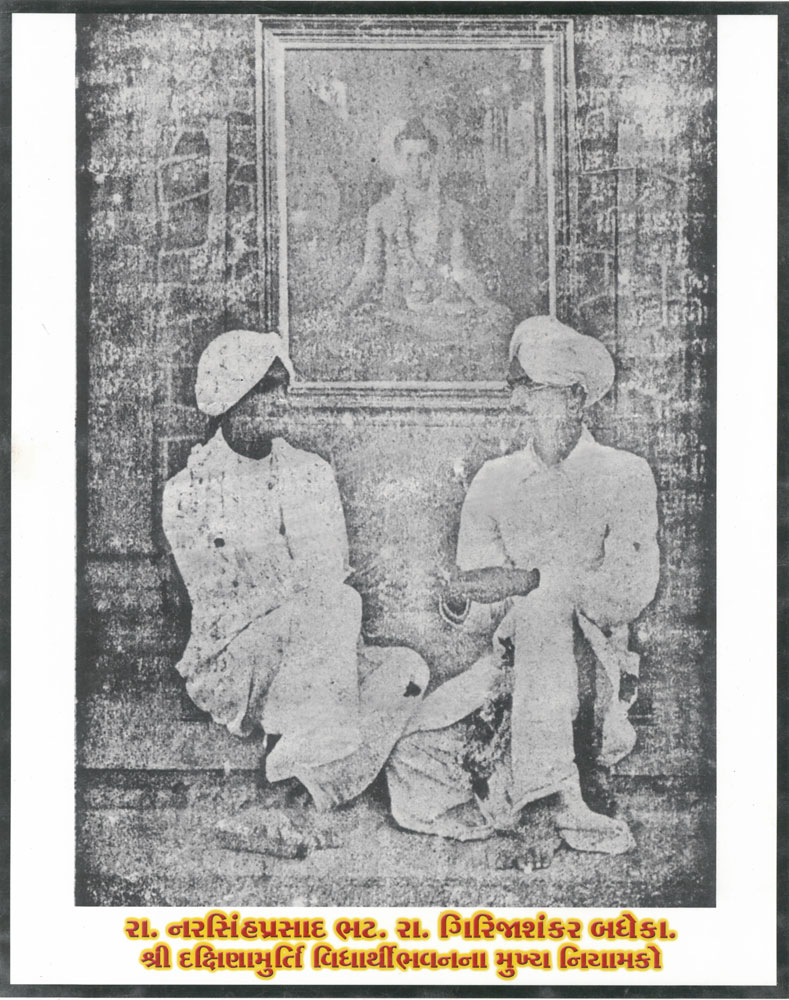
Nanabhai and Gijubhai: main administrators of Dakshinamurti Vidhyarthi Bhavan
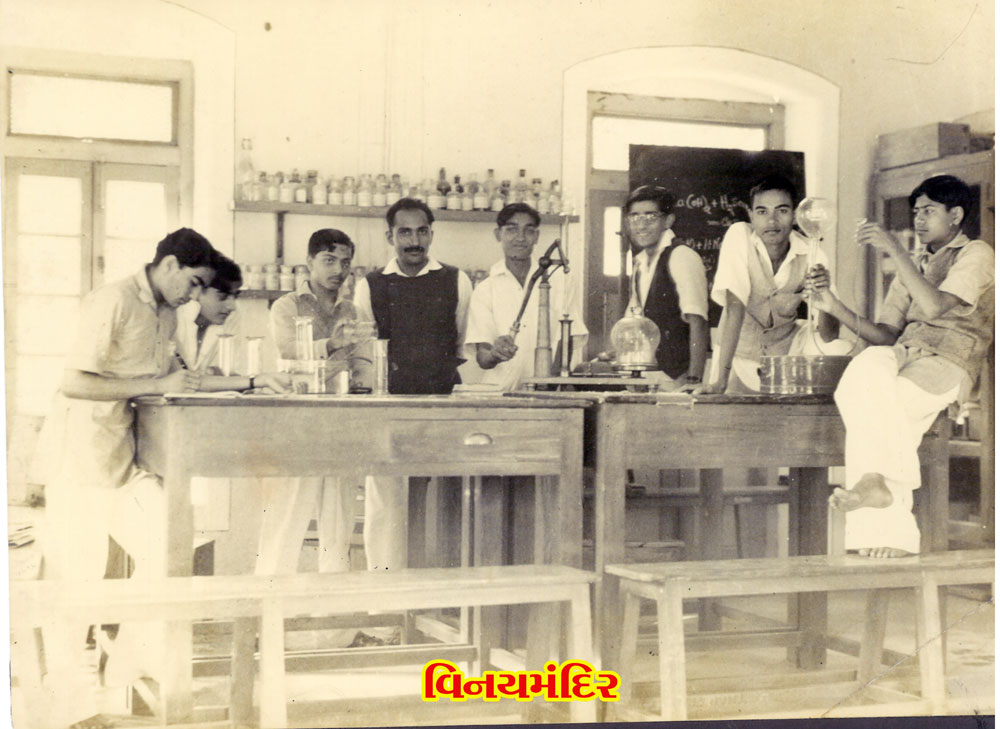
Vinaymandir
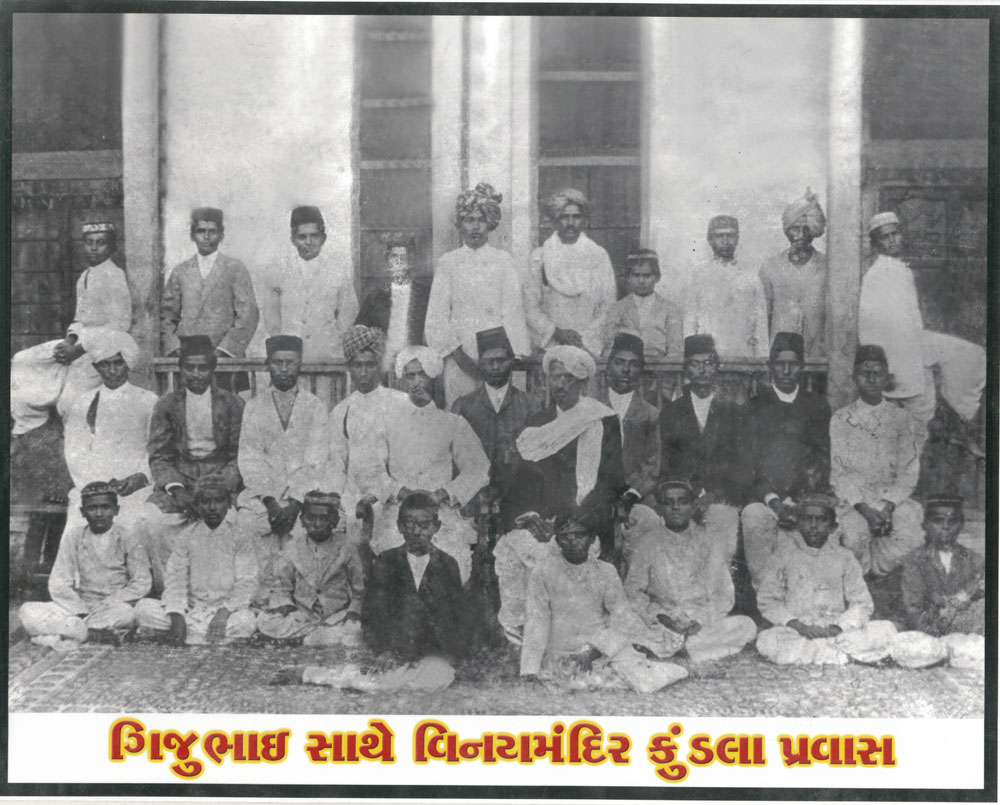
With students of Vinaymandir on trip to Kundla
As headmaster and teacher, Gijubhai inspired awe; he was a disciplinarian, and set his own example to inculcate order, silence, cleanliness and behaviour. He showed equal respect to all—students, colleagues and peons. But he also tested them in his own way. Once he put a few pinches of dirt between two cupboards, and when the cleaner did not sweep this out, he did so himself. He taught by example; he firmly believed that children learn what they see their adults doing, and thus stressed that adults should behave as they wish to see their children behave. Vinay Mandir became the laboratory for every aspect of child development.
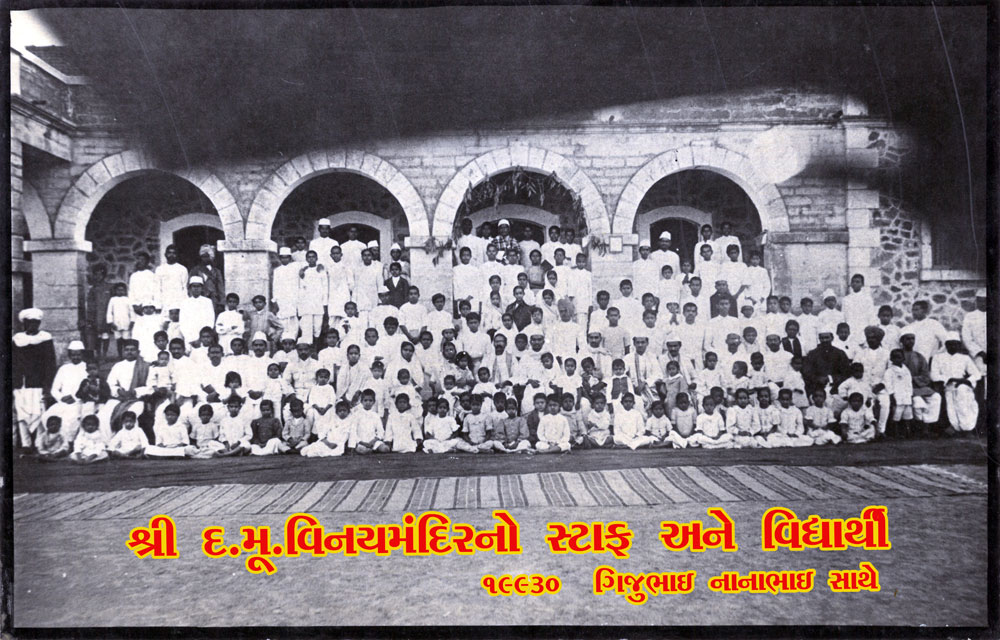
Gijubhai Nanabhai with students and staff of Vinaymandir 1930
In the meanwhile his family had also expanded and it was a challenge to make ends meet. Gijubhai carried his educational experiments from school to home and took on the upbringing of the children based on what he read and believed.
As Gijubhai started observing, understanding and learning through his direct interactions with his students in school as well as his children at home, in doing so he realized that it was futile to start inculcating educational principles and values at an older age; what was critical was to start from early childhood. Gijubhai discussed this dilemma with Nanabhai and Motabhai who agreed to share it with the trustees.
A proposal was put to the managing committee (Movdi Mandal) to start an experimental pre-school (Balshala). The proposal was accepted with the condition that Gijubhai should run it. The launch was planned for 1 August 1920, eight days after the decision was taken.
Referring to Gijubhai’s capability/suitability to start such a venture, Nanabhai had said “I baptized with water. He will baptize with life”. (I have built the body of his institution, Gijubhai will breathe life into it). Nanabhai’s prophesy was proved to be true.
Balmandir is born
A building was located. This was Ratilal K. Modi’s house near Kala Garnala, The Balshala started on 1 August 1920 with 40 children. The head of the State Council Sir Prabhashankar Pattani gave the opening remarks. Smt Ramaben Pattani inaugurated the Balshala as it was called. The State Councillor Tudor Owen had sent with affection a variety of expensive toys, cars, trains etc. The Maharaja of Bhavnagar was sanctioned one of his cars to pick up and drop the children from the city.
The number of children grew rapidly. There was need for more and better space. It was felt that the Balshala should have its own building. A small hill near the hill on which the Takhteshwar temple stood was identified it was surrounded by grass fields and groves. The foundation was laid. A close friend of the group Sheth Hiralal Amrutlal Shah donated a sum of Rs 20,000/ towards the construction of the building.
The new building was named Dakshinamurti Balmandir, and was inaugurated on 4 May 1922 by Kasturba Gandhi. This was not only the first systematic scientifically planned preschool in Gujarat, but also in India.
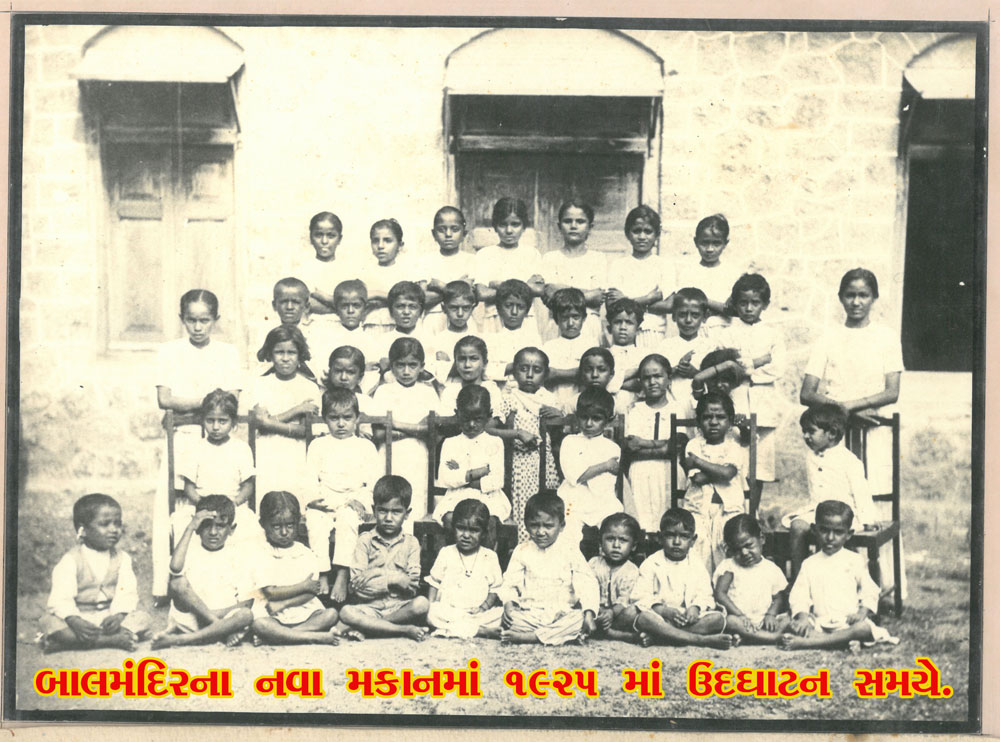
Inauguration of the new Balmandir building on the hill
At this time Gijubhai began to be joined in his work by several others. The first to join was Manubhai Morarji Bhatt, followed by Narmadaben Raval. Gijubhai called his niece Monghiben who had been widowed as a child. With Gijubhai’s nurturing she became an excellent teacher, inviting the praise of Madame Montessori herself. Hariharbhai Bhatt (writer of Ekaj de Chingari), Shankarbhai Bhatt, Jayaben Parekh and others joined with Gijubhai to work with enthusiasm.
Taraben Modak, who was then the Principal of the Barton Women’s Training College in Rajkot, came to Bhavnagar. After meeting and talking with Gijubhai she felt that her life’s mission lay in child education. She gave up her post in Rajkot to join Gijubhai. This was the start of a long and close collaboration. The two were synonymously known as the pioneers of children’s education in Gujarat.
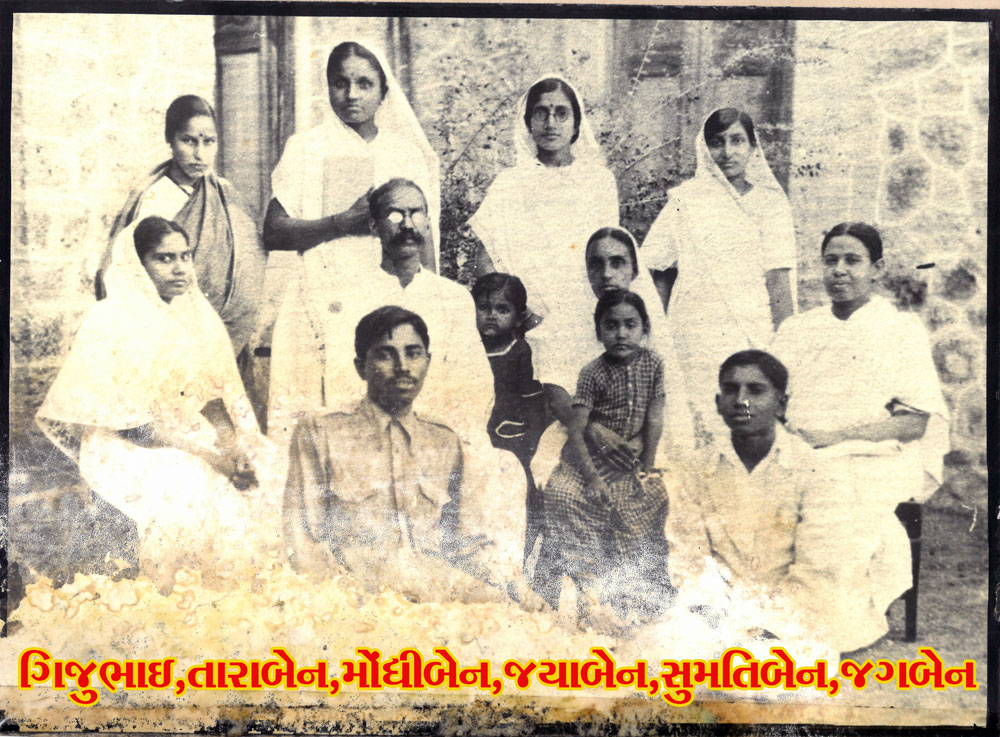
Gijubhai with Taraben Monghiben Jayaben Sumatiben and Jaguben
The tree spreads its branches
In just five years Gijubhai made great strides in the area of children’s education. A friend of his, Jugatrambhai Dave, came from Gandhiji’s ashram to spend some time with him. He understood closely the thinking and philosophy guiding Gijubhai’s work and shared its praises in a song.
Jugatrambhai found this approach to child education so meaningful and relevant that he adapted it to the adivasi area in Vedchhi where he was working. This became the start of the Balvadi movement.
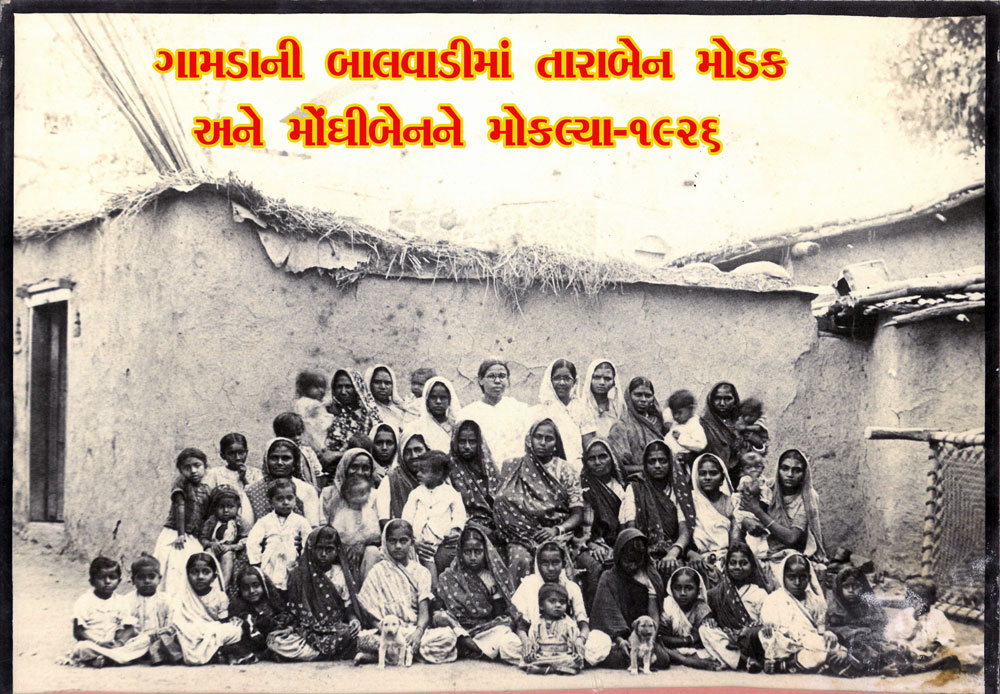
Taraben Modak and Monghiben at rural balmandir
Many young people were attracted to the ideas and work of Gijubhai and came to Dakshinamurti. Early every morning, Gijubhai, wrapped in a godada (quilt) would give his talks, and the youth, themselves wrapped in quilts, listened, and discussed. The morning sessions came to be known as the Godada Adhyapan Mandir (training school in quilts). The early trainees included Vajubhai Dave, Bhogibhai Parekh, Ramnarain N. Pathak, Govindbhai Phakar and Ranchhodji Gayak. Many of them took the diksha of children’s education at the hands of Gijubhai and went on to become capable educators. They set up Balmandirs across the state, and dedicated their lives to the cause of education.
In 1925 Gijubhai took on three major initiatives that created a revolution which spread the message of children’s education across Gujarat
Inspired by the success of the Godada Adhyapan Mandir, he set up a formal Adhyapan Mandir, to train young people.
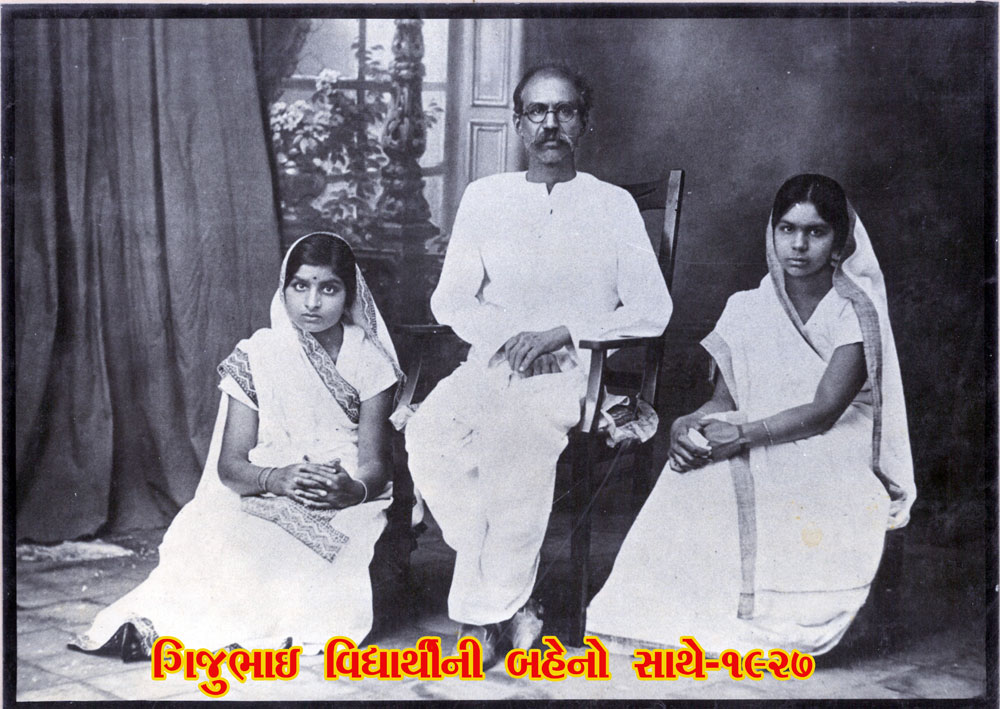
With students of Teacher Training course 1927
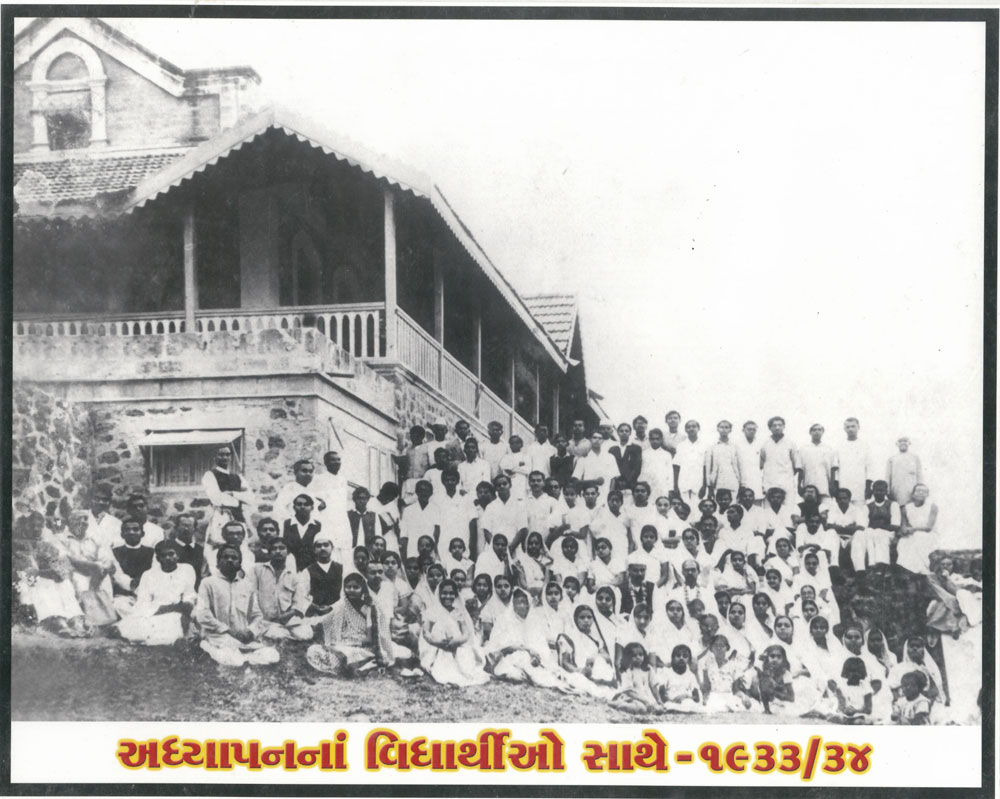
With students of the Teacher Training Course 1933-34
To spread the thinking and to attract larger interest in children’s education, the first Montessori Sammelan was held at Dakshinamurti. Smt. Saraladevi Sarabhai, who had personal experience in using the Montessori system in educating her own children, and who had tremendous belief in this philosophy, chaired the Sammelan.
The Sammelan concluded with the setting up of the Nutan Bal Shikshan Sangh, to take the work ahead. It was headed by Saraladevi Sarabhai. The deputy leader was Nanabhai Bhatt and Gijubhai and Taraben were the secretaries.
Gijubhai invited all citizens interested in the new children’s education approach to join. The enthusiastic support of these members helped spread the new wave across Gujarat. The Sangh became a platform to carry this forward. It was proposed to publish a monthly Shikshan Patrika to give voice to the movement. Gijubhai and Taraben were to be the editors.
Shikshan Patrika was published every month. The articles discussed issues and initiatives in education. Gijubhai and Taraben shared their experiments and experiences, in simple language but with a scientific and systematic approach. The Patrika reached thousands of schools, libraries and parents across Gujarat. This had a tremendous role in changing views and approaches of parents towards their children.
Gijubhai made efforts to take this beyond Gujarat. A Marathi version was started from Dadar in Mumbai, and a Hundi version from Indore. Thus the new ideas spread in Maharashtra, Madhya Pradesh and Rajasthan.
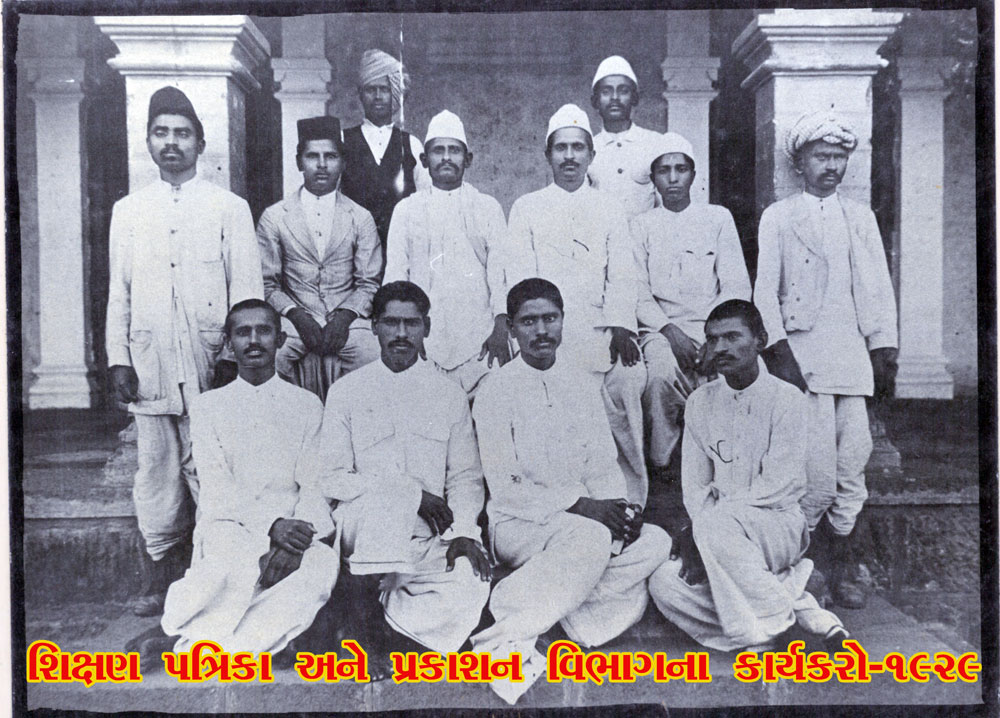
Staff of Shikshan Patrika 1929
These three initiatives contributed substantially to the spread of the new thinking about children’s education.
The frank and fearless criticism of the existing methods of education created a sensation in Gujarat. Conferences were organized in 1925 at Bhavnagar, and 1928 at Ahmedabad.
Until this time Gijubhai had created the shastra of education, and set up institutions to support this. But there was the need to spread this new thinking far and wide. Gijubhai took on this task with the creation of literature, and most significantly children’s literature.
Kakasaheb Kalelkar called Gijubhai the Brahma of Children’s Literature. The Gujarati Sahitya Parishad honoured him with the Ranjitram Gold Medal.
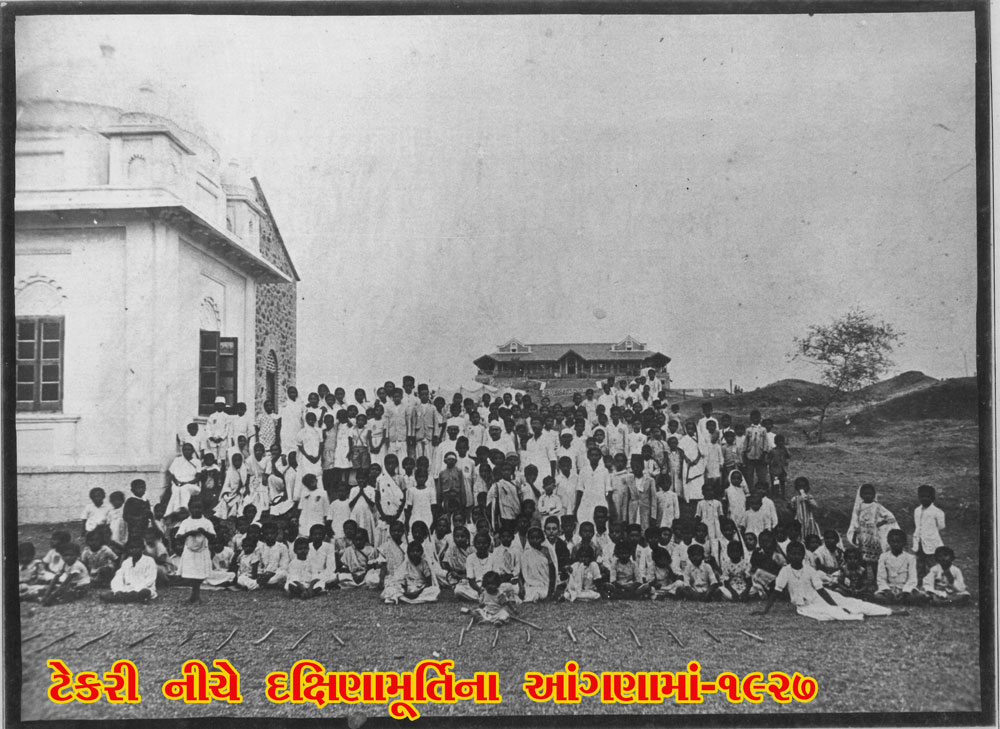
At the foot of the Dakshinamurti hill, 1927
Heeding the nationalist call
From 1920 onwards, the country was plunged into a nationalistic fervour with Gandhi showing a hitherto untried path of non-violent protest against the British rule. The Dandi March of 1930 took the fervour to new levels. People old and young, men and women, of all professions and trades participated in every way that they could.
On his Balmandir hill, Gijubhai thought 'Bapu says that everyone can take part in this non-violent battle - men and women, young and old, even children'. He thought "I am a teacher, I am a teacher of children, how can I contribute to the liberation of my nation?"
He sought the best way by which he could contribute to the ongoing nationalistic movement. And he decided that his most effective contribution could be in the mission to spread literacy, especially adult literacy.
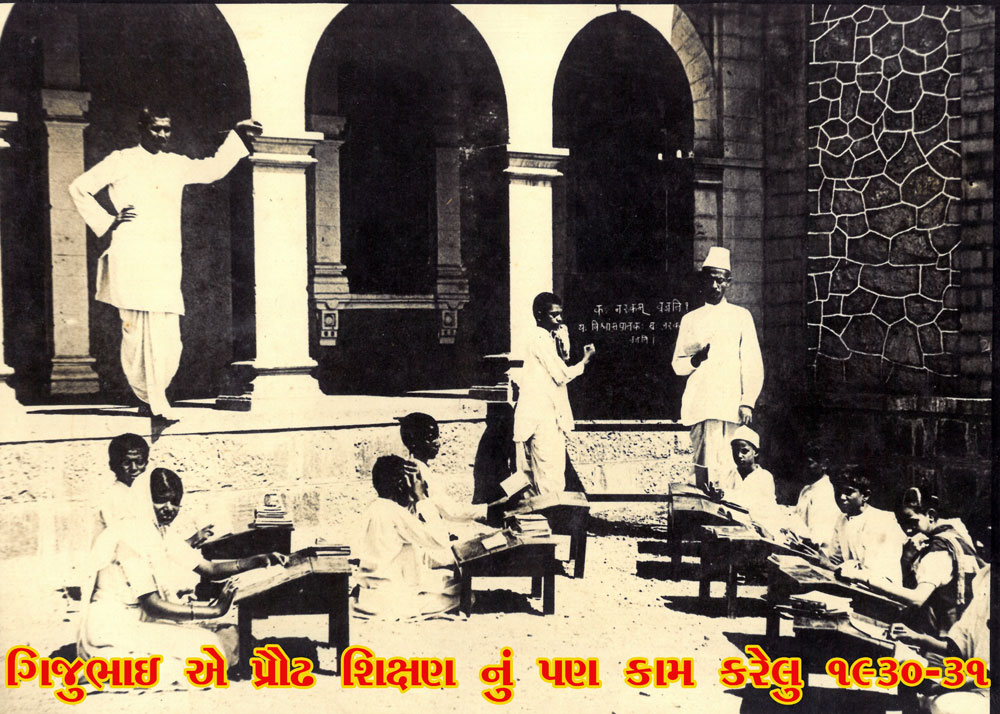
Adult education and literacy programme 1930-31
In 1930-31 during the Bardoli Satyagraha, Gijubhai, Taraben and Mongiben went to Navsari taluka where the displaced Bardoli farmers had migrated, and were staying in temporary shelters in the forests. Gijubhai stayed with the families, caring for their children, teaching them through stories and songs.
Around the same time, he went from village to village initiating a battalion of children satyagrahis called Vanar Sena. Younger children were formed into a Maanjar Sena. These ‘senas’ used to go on prabhat pheri, announce the public meetings (sabhas), picket liquor and foreign cloth shops, and made life difficult for government officials.
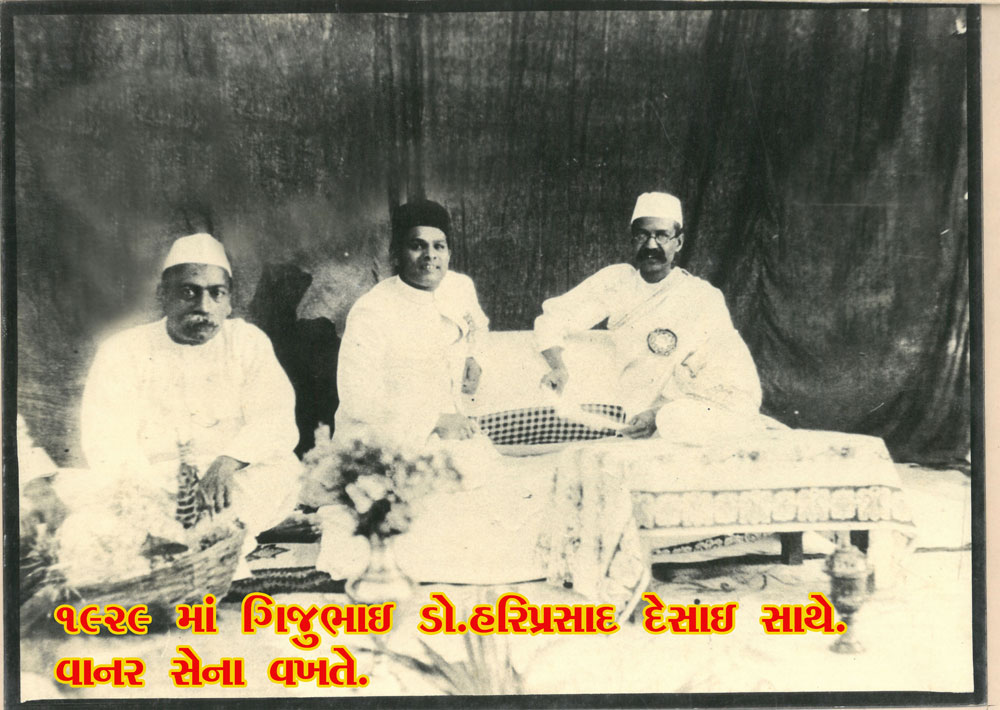
Gijubhai with Dr Hariprasad Desai during Vanar Sena 1929
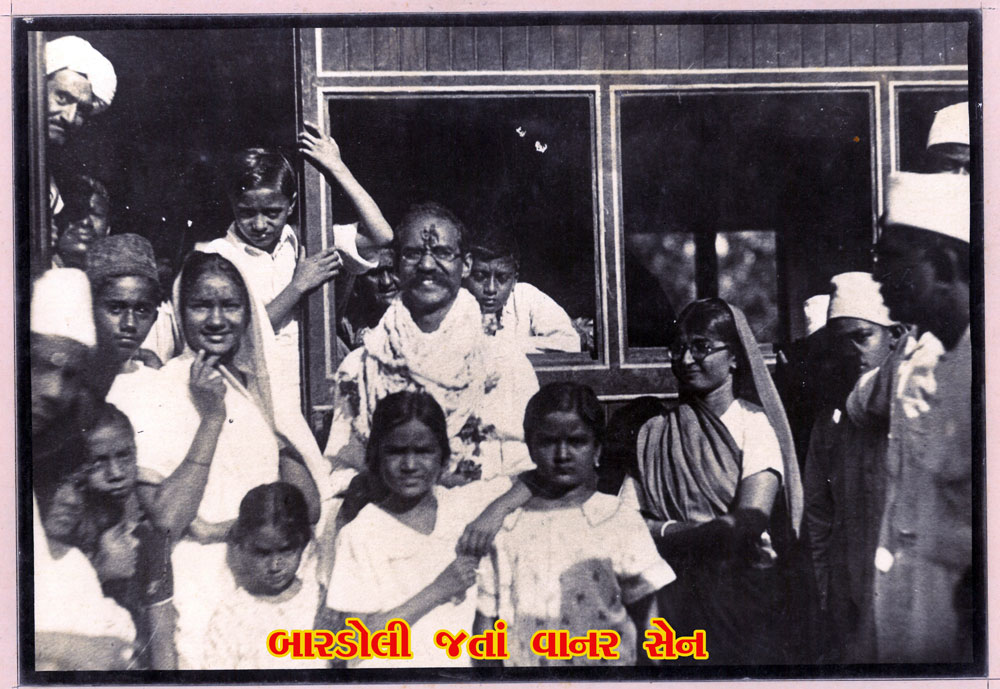
Vanar sena on the way to Bardoli
Under Gijubhai, Nanabhai and Haribhai, Dakshinamurti came to be regarded as a training centre for dedicated freedom fighters.
Moving on
In 1936, after 20 years in Dakshinamurti, Gijubhai left his post.
In the meanwhile several of the trainees who had trained under him in the Adhyapan Mandir had gone on to start their own Balmandirs in different parts of Gujarat. Gijubhai constantly provided them with his support and encouragement, mainly through letters. Gijubhai was an asthma patient, and his incessant work was taking a toll on his health. But now that he was not fully engaged with Dakshinamurti, he was eager to see for himself how his ideas had taken root.
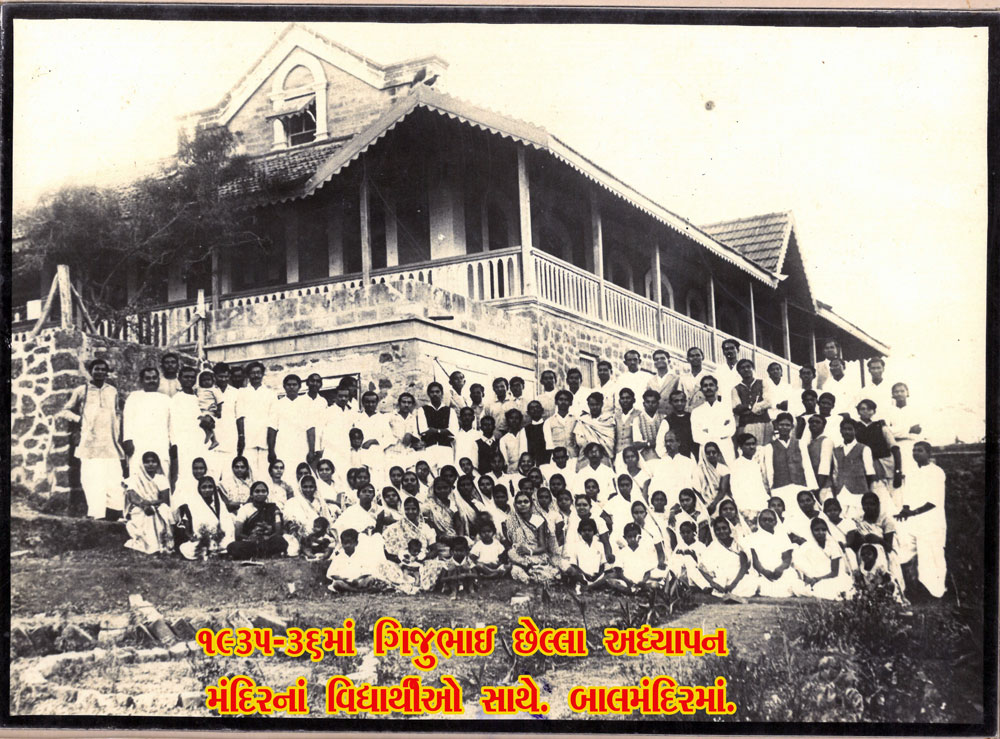
With the last batch of teacher trainees, Balmandir 1935-36
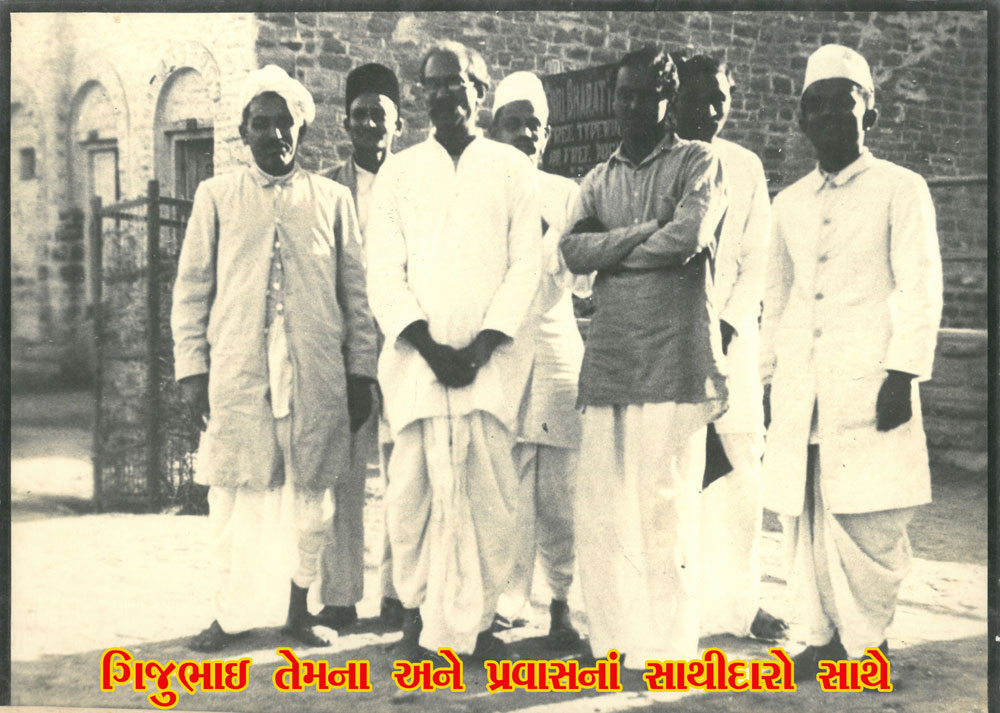
With his travel companions
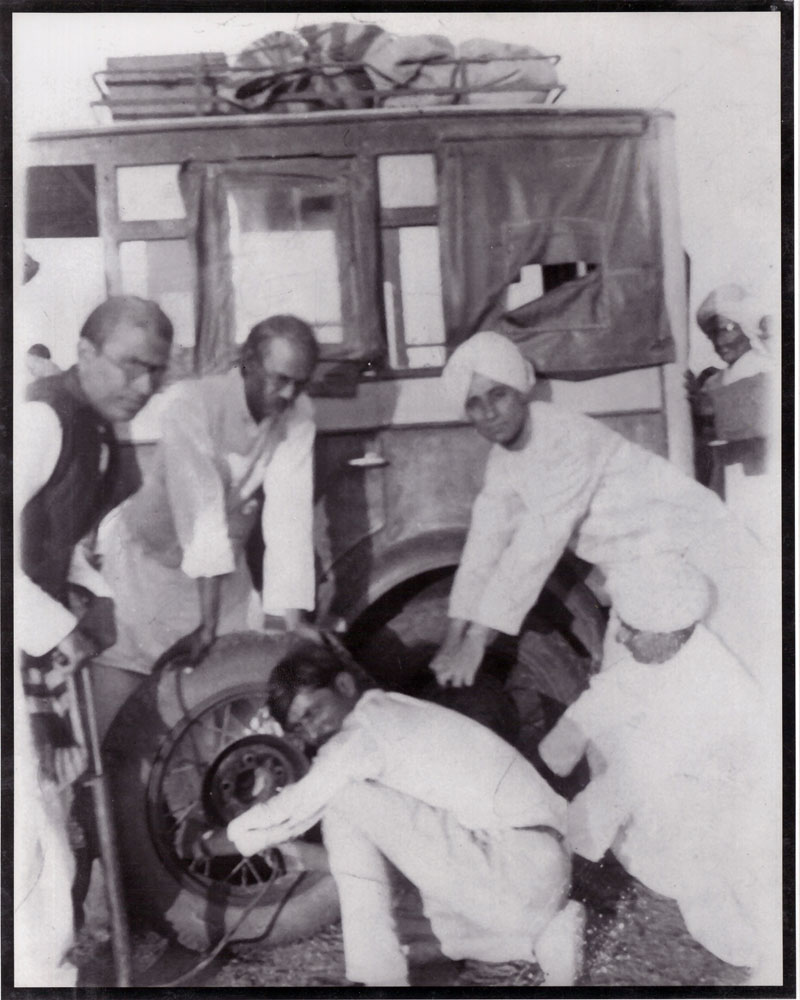
On travels
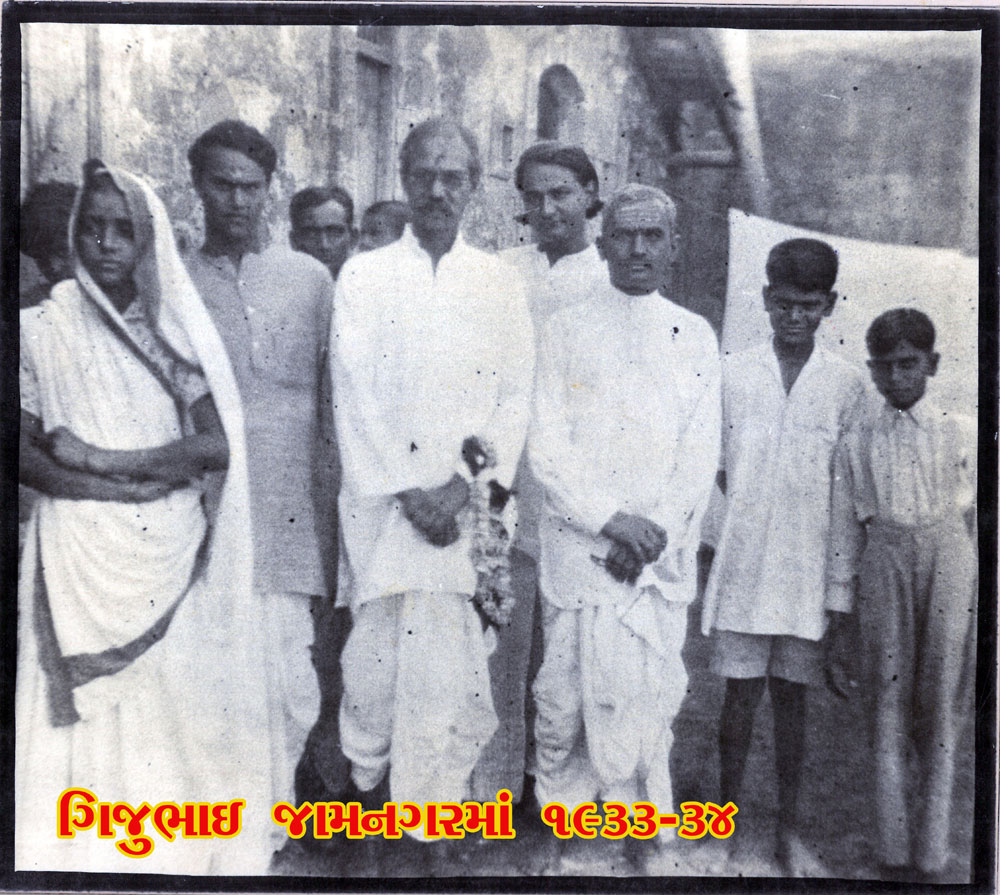
In Jamnagar 1933-34
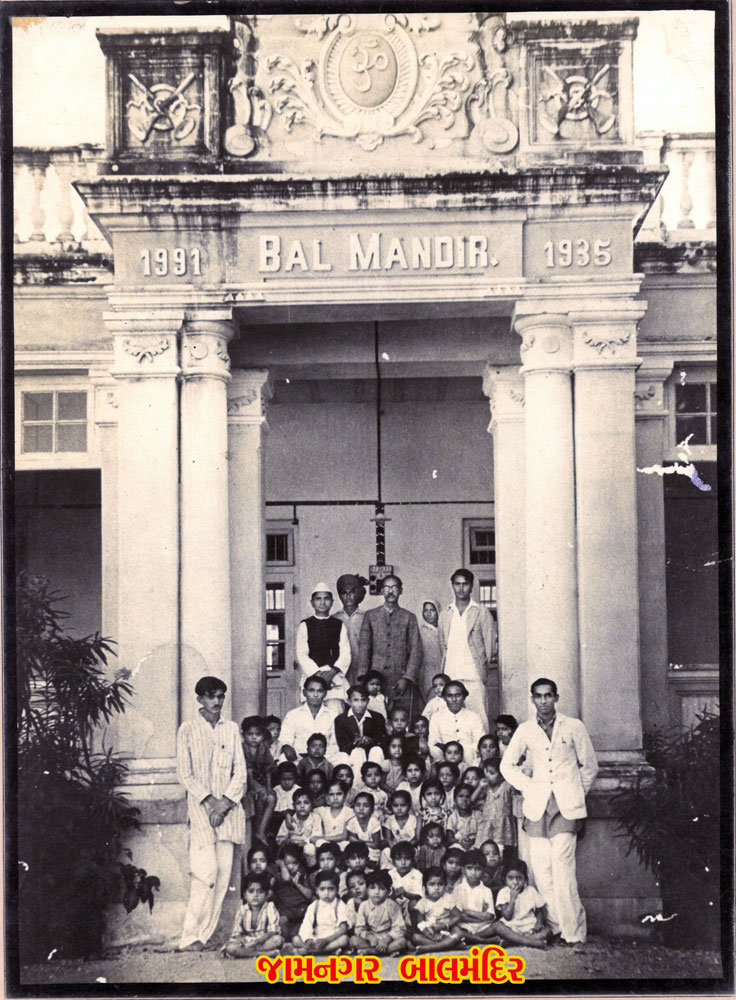
Jamnagar Balmandir
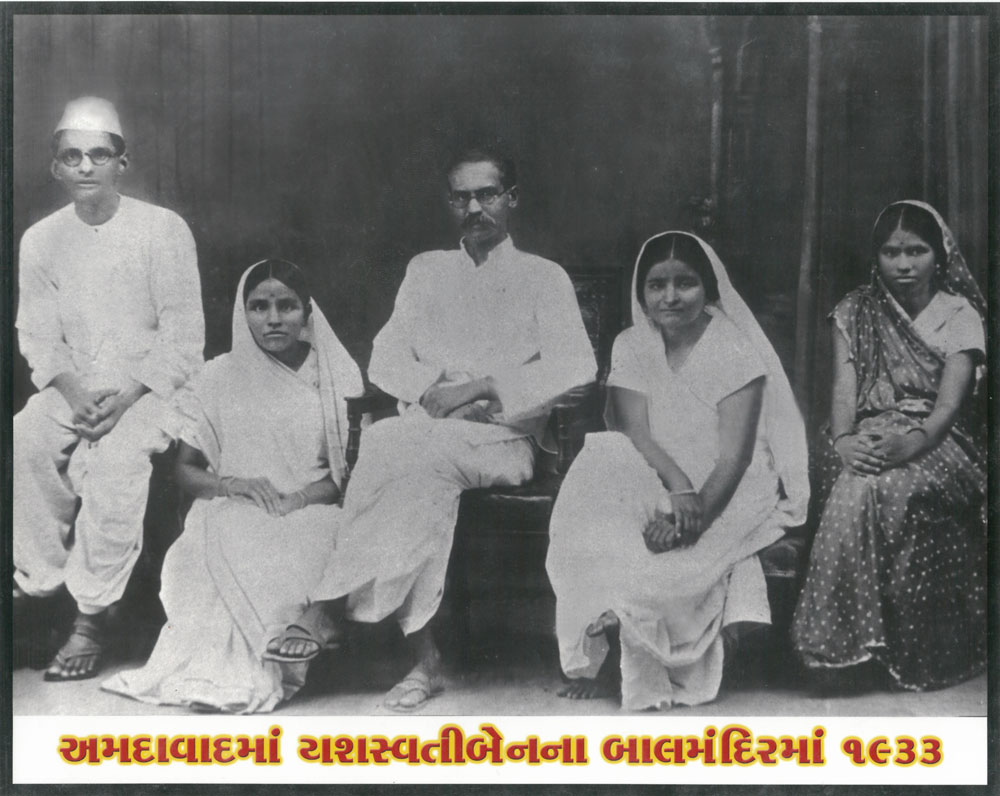
At Yashasvatiben’s Balmandir in Ahmedabad 1933
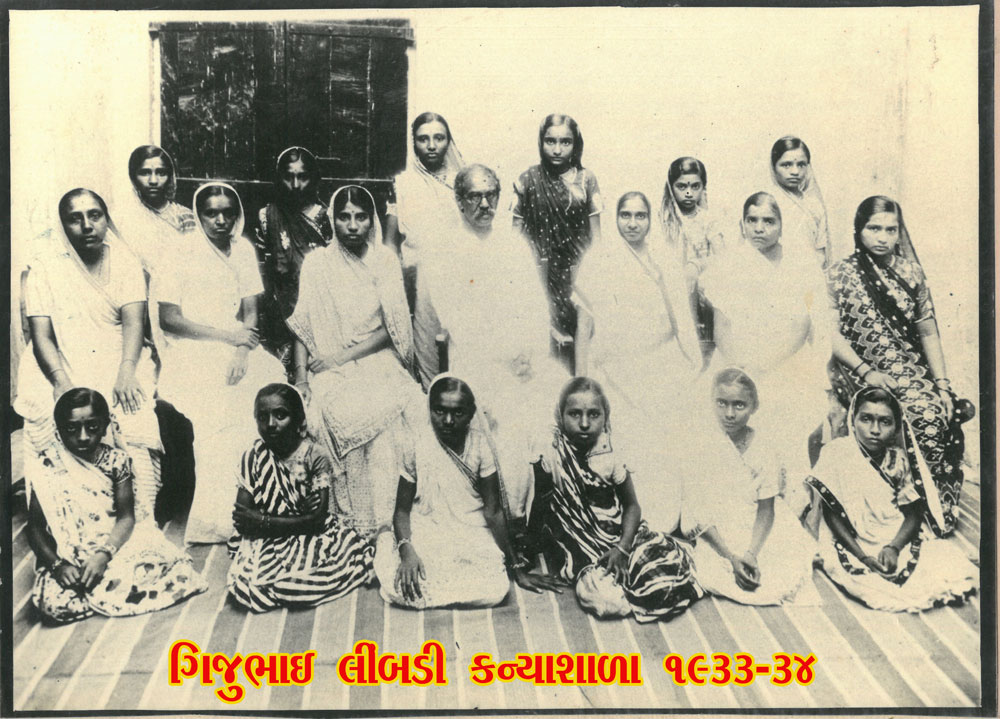
Gijubhai at Limbi Girls School 1933-34
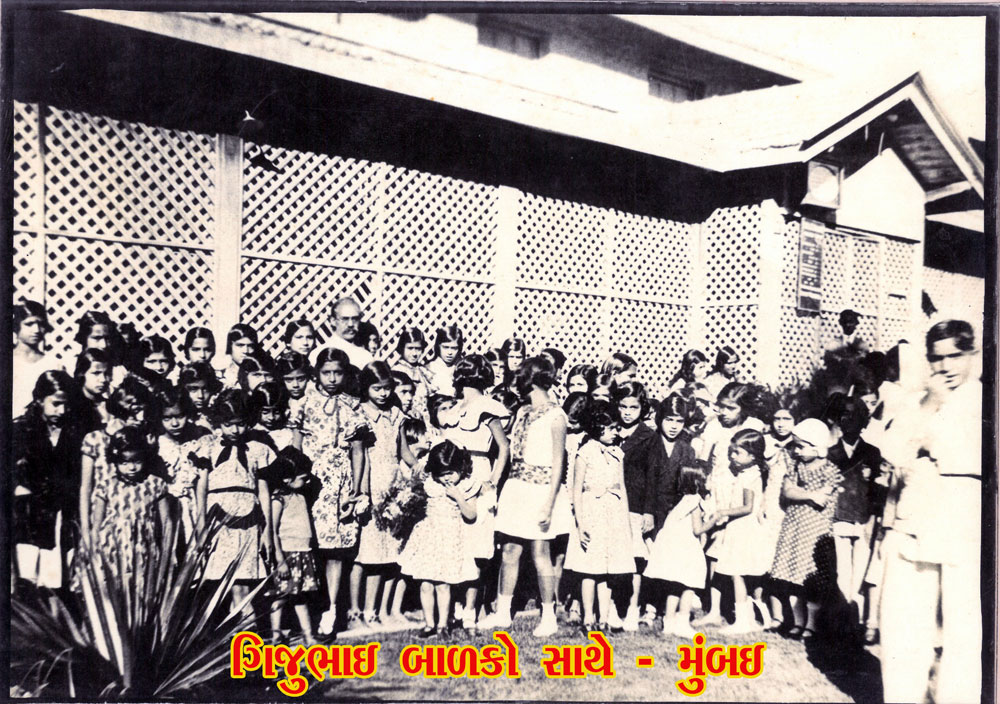
With students in Mumbai
He undertook a visit to Kutch at the invitation of the Kutch Lohana Kelavni Mandal to help set the curriculum and systems for the fifty schools under their umbrella. The travel was arduous and the work demanding, but his zeal was undiminished. He returned once again to Kutch for a teacher training programme to reinforce the work and motivation.
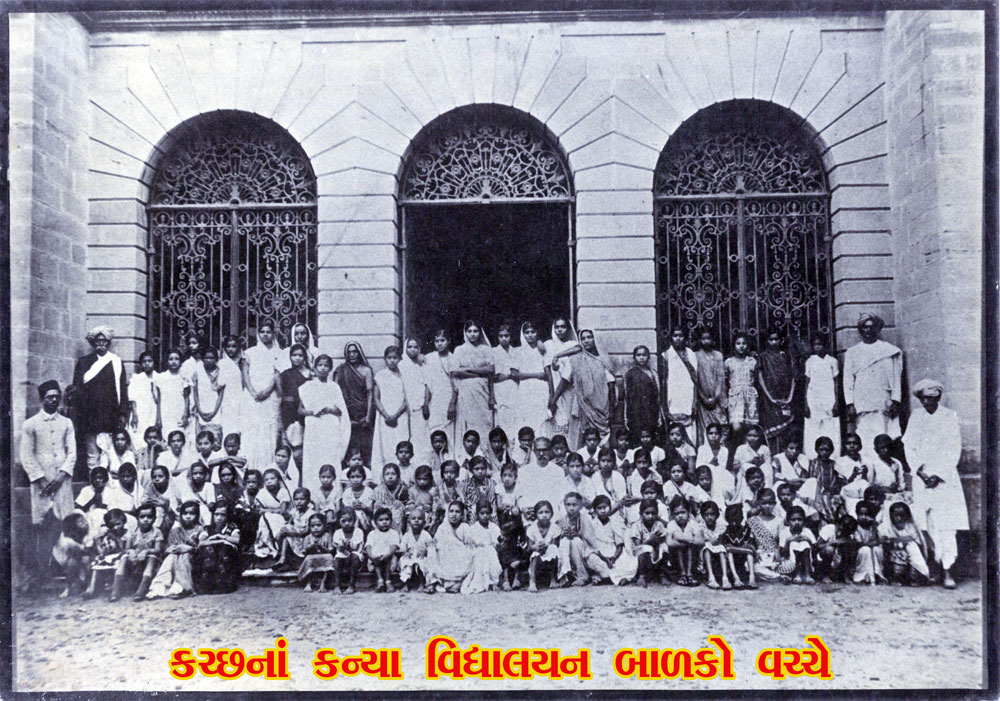
With children and staff of Kutch Kanya Vidhyalaya 1936
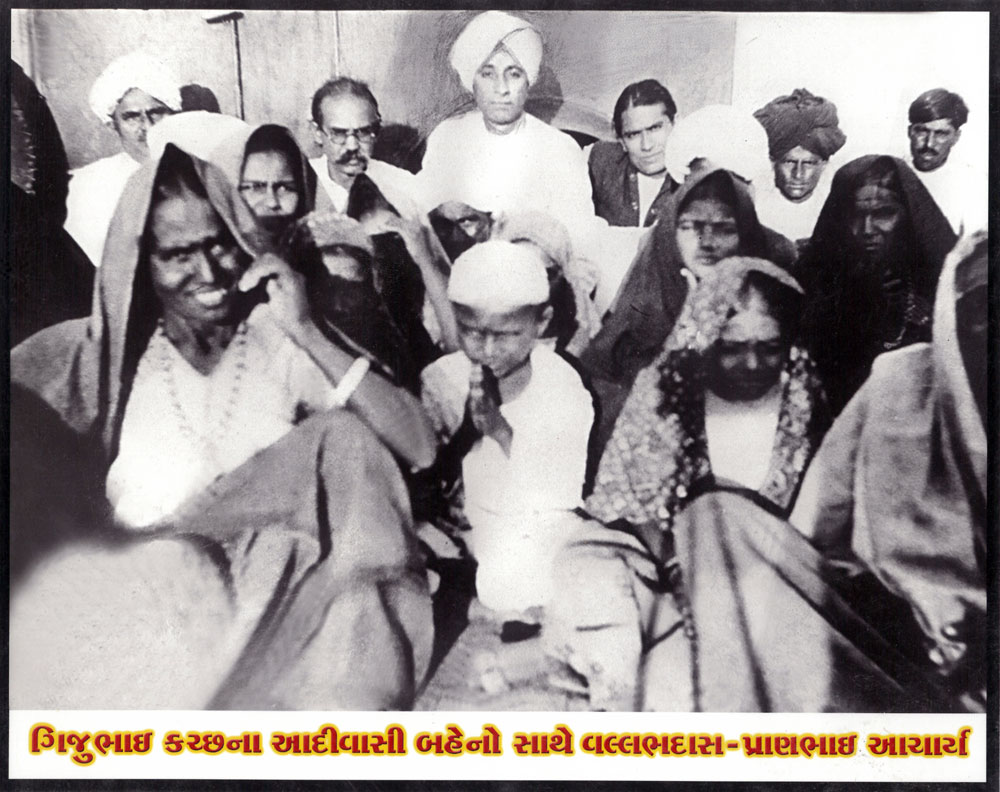
With Adivasi women in Kutch
He did a month-long training programme in Vaso, at the invitation of Motibhai Amin. Thus coming full circle to the man and the place where his initiation into children’s education had begun in 1915.
In 1936 Gijubhai travelled to Hyderabad in Sindh where he interacted with teachers and shared his thoughts and experiences. He was invited to chair the Bal Mela at Karachi where he delighted the children with his wonderful stories and activities, and inspired the teachers to adopt the new approach to child education.
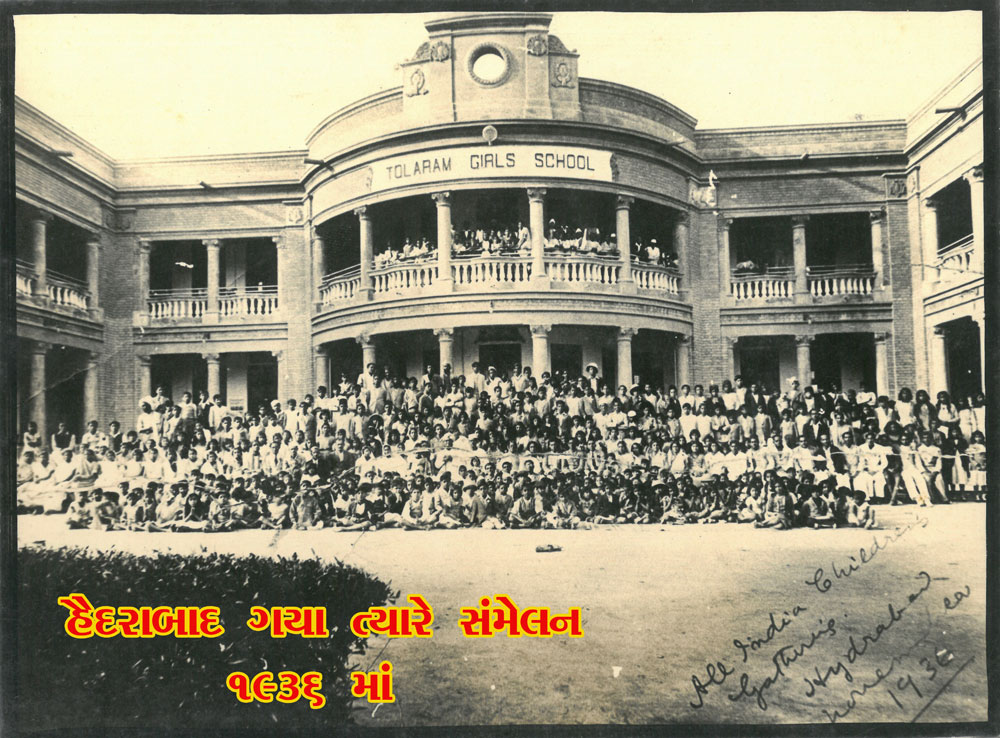
At the Children's convention in Hyderabad, Sindh 1936
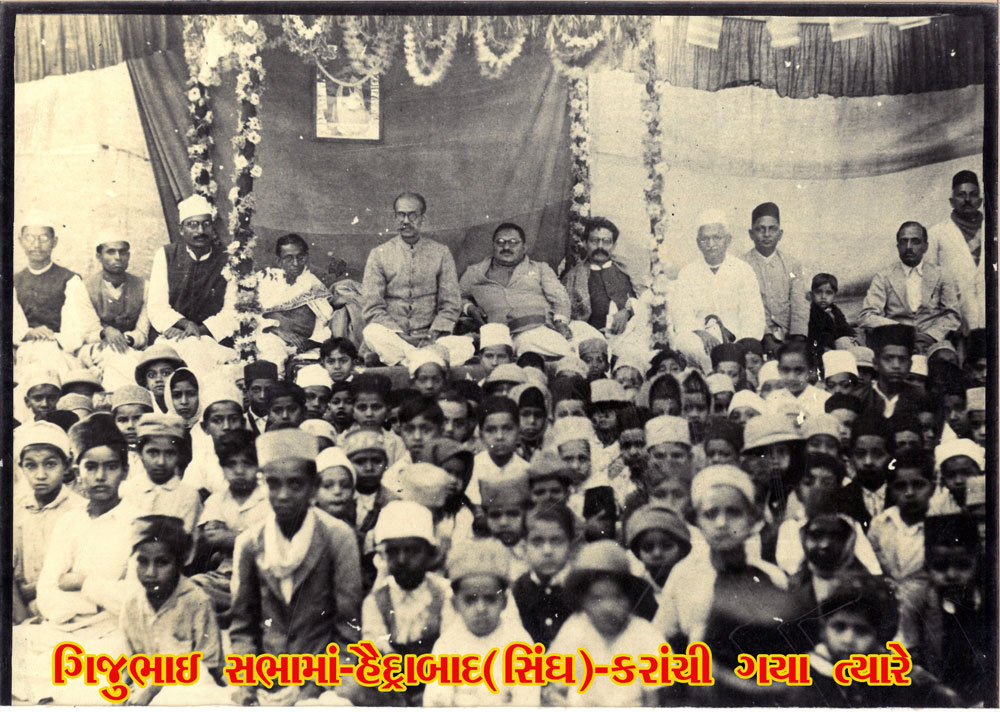
Karachi children’s sammelan 1936
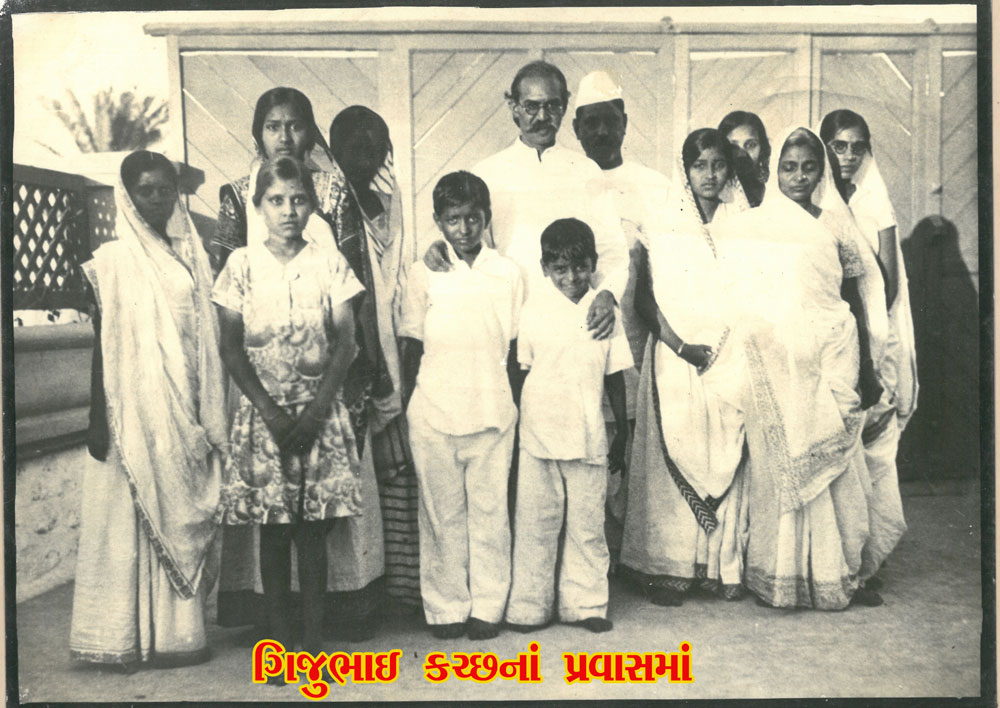
During visit to Kutch 1936
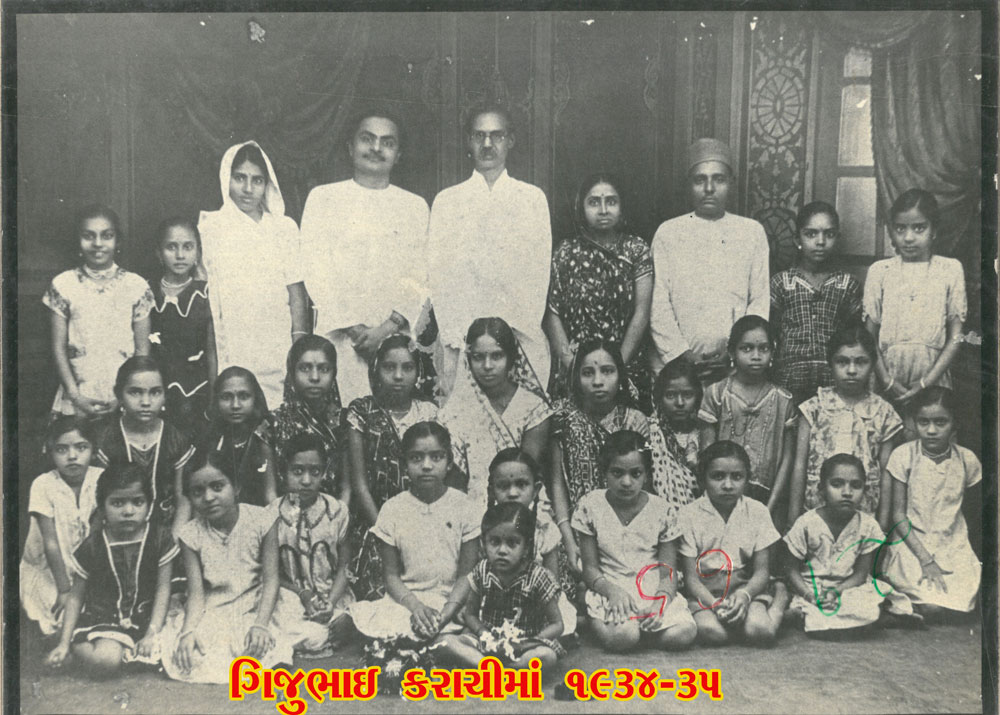
In Karachi 1934-35
He insisted on going for the inauguration of a Harijan Balmandir in Porbandar and stayed with his colleagues in the harijan ashram there.
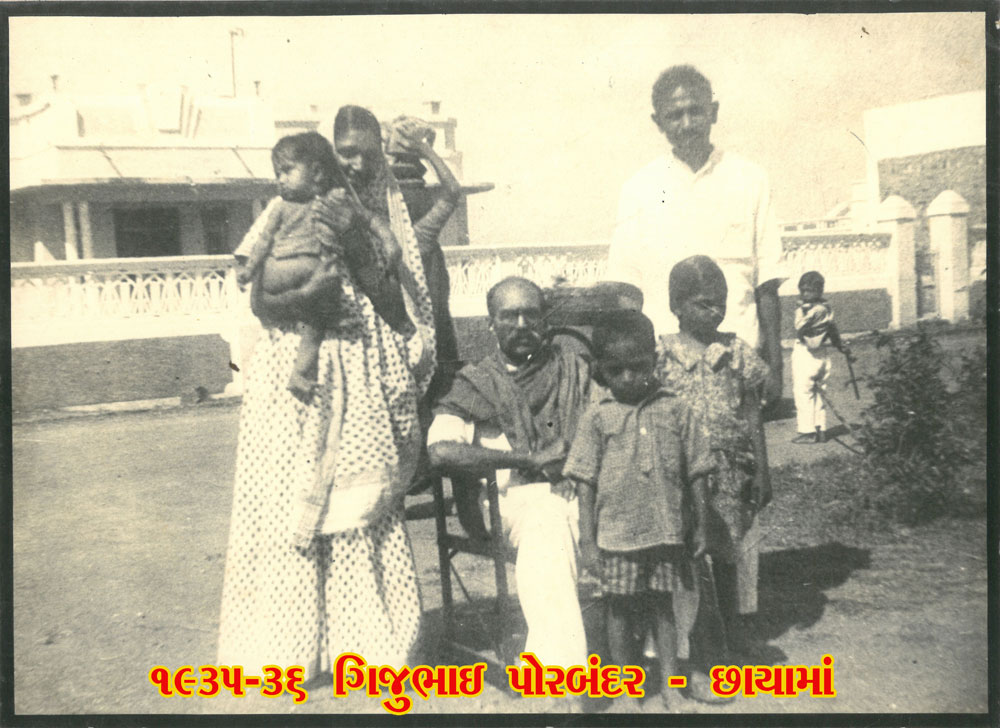
Porbandar 1935-36
In 1937 he was felicitated in Ahmedabad with an award of Rs.12,000/-. Gijubhai said that this was a symbol of honour for the children of Gujarat, and donated the amount to child welfare activities.
In 1938, on the urging of his old friend Barrister Popatlal Chudgar, Gijubhai went to Rajkot and started an Adhyapan Mandir there in 1938. This was to be the last.
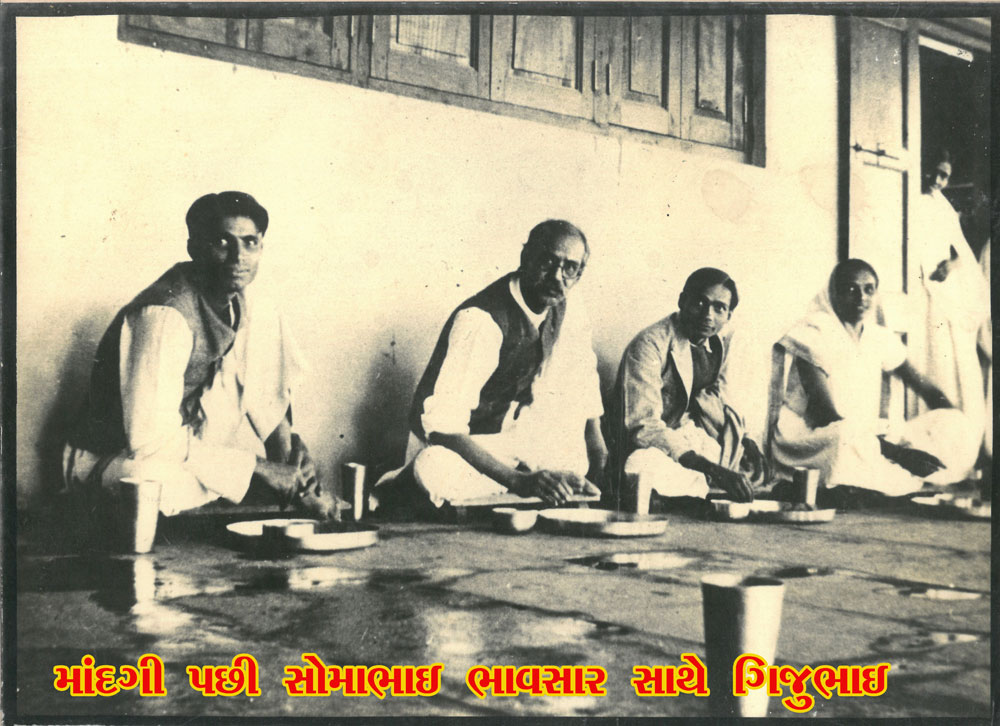
Gijubhai, after his illness, with Somabhai Bhavsar
His health began to fail rapidly. It was planned that he be taken to Panchgani and Devlali for a change of air, but on the way he had to be admitted to Mumbai’s Harkisandas Hospital where he breathed his last on 23 June 1939. He was only 54 years old.
Gijubhai started his work as an educator at age of 32 years. In two decades he contributed immensely as a thinker, educationist, institution builder, writer and storyteller. He was indefatigable in his work, and hugely prolific in his writing. It was almost as if he had a premonition that he had so much to accomplish in a short time. He once told Nanabhai who used to urge him to take some rest when his health started failing:
I believe there is no one more foolish than the one who wishes for a long life. To ask to live a hundred years and then to do only ten years’ worth of work is not what I would wish. Rather I would wish that in a lifetime of fifty years, I could do a hundred years of work ... to not look here and there while working, and then not to look back at all the day one stops working, that is my philosophy.
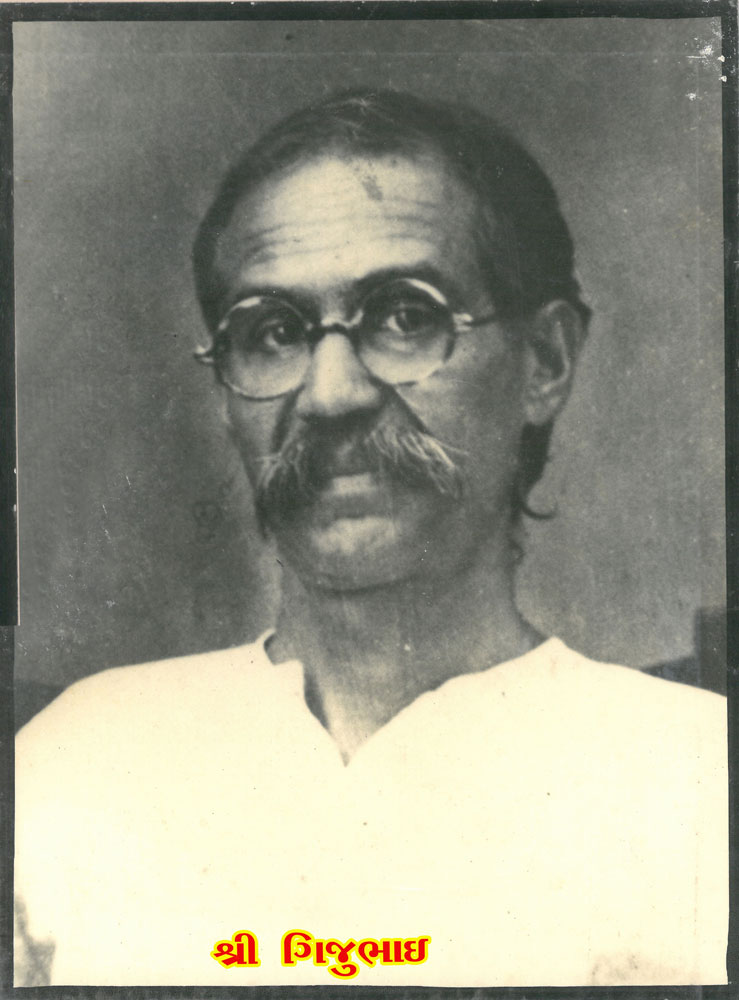
Gijubhai
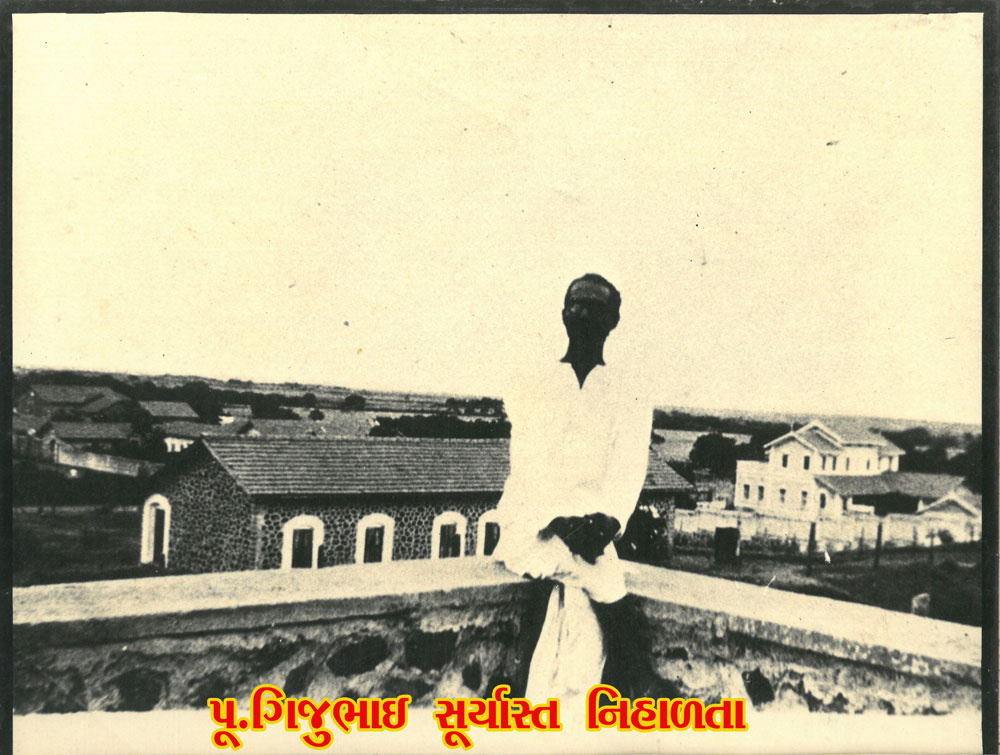
Watching the sunset from the hill
Compiled by Mamata Pandya
Sources:
Bal Shikshan Praneta Ramnarayan Pathak
Gijubhai Jeevan ane Karya Manubhai Pancholi, Rasendra Pandya, Takhtsinh Parmar (eds)
Gijubhainu Kelavni ma Pradaan Bharatlal Pathak
Moochhali Ma Girish Bhatt